Bobbing seahorses. Rehabilitated turtles. Feeding the stingrays.
A trip to the Marine Science Center in Ponce Inlet is a fantastic way to learn more about the aquatic life that surrounds this coastal town and one of the best things to do near Daytona Beach.
Most people know Ponce Inlet as a great place to surf, walk along the sand, or admire the sunset, but what about the creatures who live underneath those glorious waves?
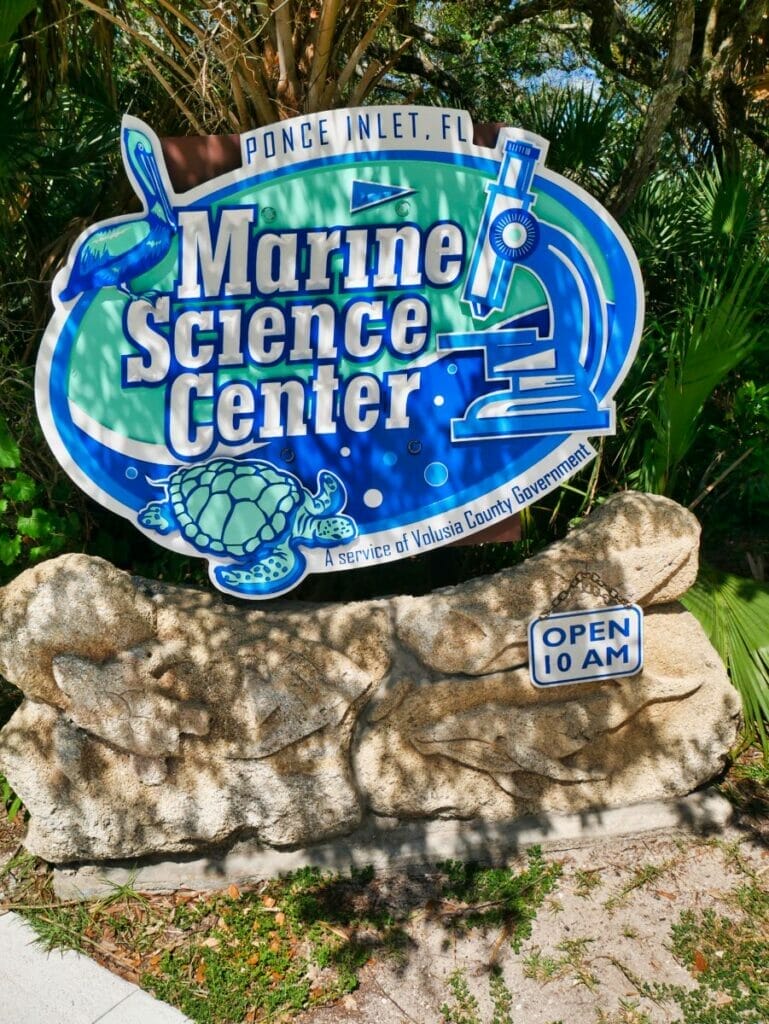
The Marine Science Center is a fun, affordable thing to do with the kids in Ponce Inlet to get up close to fish, seahorses, stingrays, turtles, and more.
It’s got a very local feel, the kind of place that you know is fueled by love for the animals and Ponce Inlet itself rather than a big, uninspired corporation.
In this guide, we’ll walk you through the practical tips for visiting, as well as give you a glimpse “under the sea” to see what there is to explore.
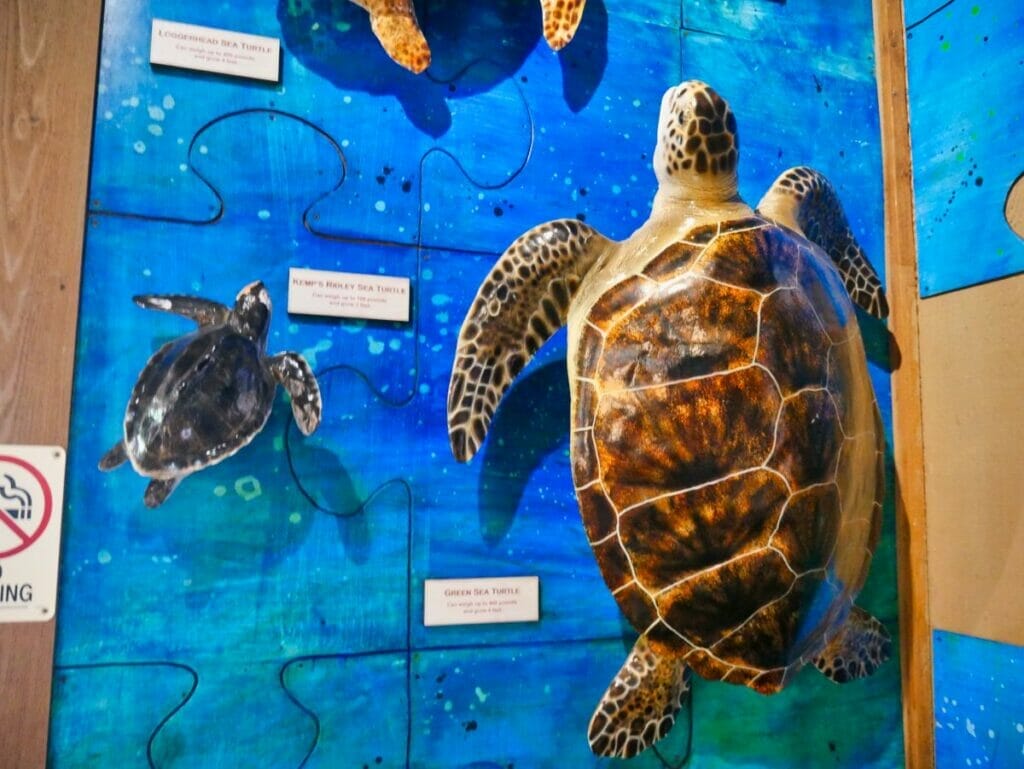
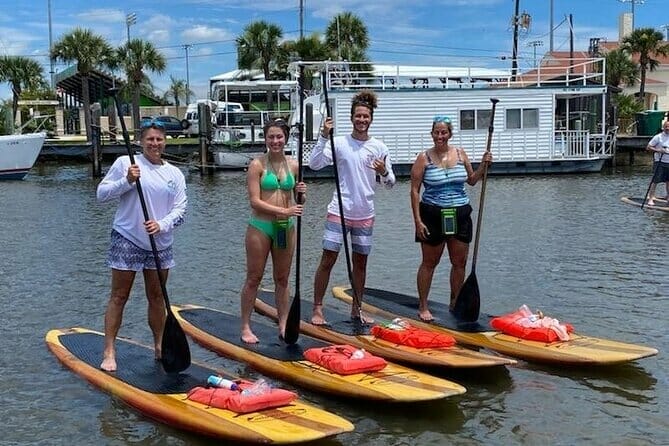
😎Want another fun activity to add to your Daytona trip?
Try this dolphin and manatee paddleboarding adventure (⭐⭐⭐⭐⭐, 1500+ reviews!)
Practical Marine Science Center Information
Before we dive (get it? I’ll see myself out) into the review and what to expect, let’s go over some of the more practical information you’ll need to know about the Science Center.
The numbers, if you will.
- The Marine Science Center is open Tuesday through Sunday on most days of the year, except a few holidays like Thanksgiving, Christmas, and Martin Luther King Day (check the website before you visit if it’s on a holiday just in case).
- Hours are usually 10am to 5pm, except Sundays which are 12pm to 5pm
- Admission, at the most, is $8 per adult, with decreasing amounts for seniors and children
- The address is 100 Lighthouse Drive, Ponce Inlet, Florida, 32127
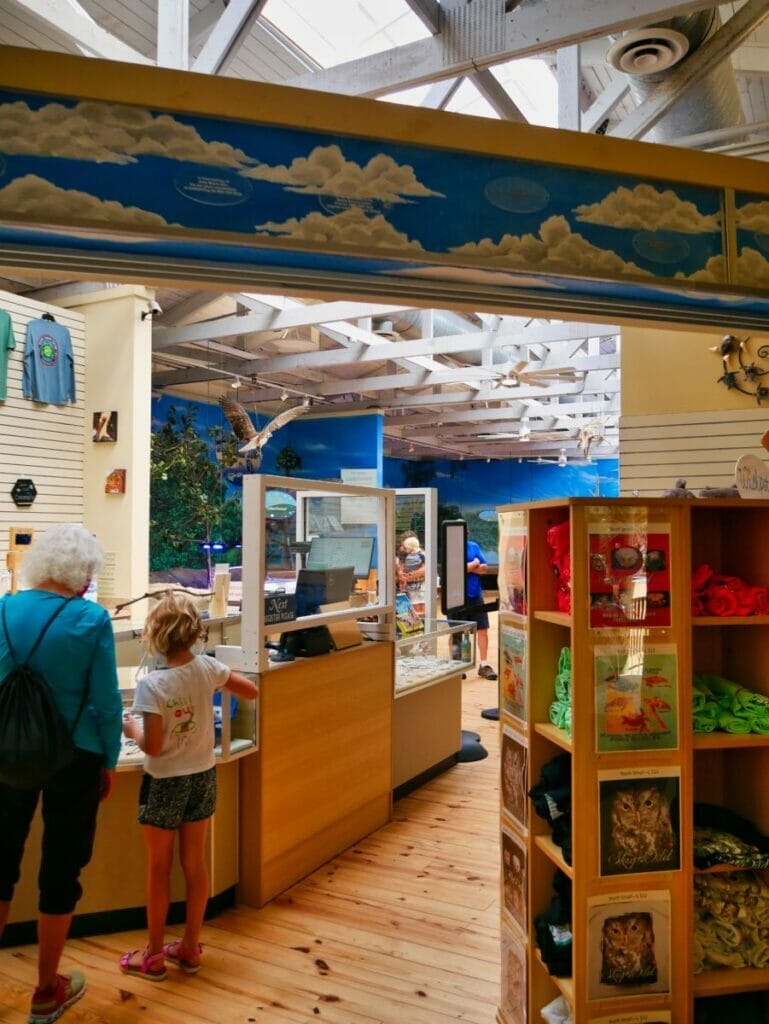
Tips for Visiting the Marine Science Center
- There is plenty of parking outside the Marine Science Center for free
- You can also walk from other areas of Ponce Inlet, like the Ponce Inlet Lighthouse (about an 8 minute walk, and this is what we did!)
- If you’re going out in the heat of the day, make sure to put on sunscreen as there are some outside portions that the Marine Science Center owns (though much is indoors and/or shaded)
- Give yourself about 1.5 to 2 hours to see the whole Marine Science Center with kids, including the nature walk and bird rehabilitation center. Adults traveling on their own may take closer to 1 to 1.5 hours
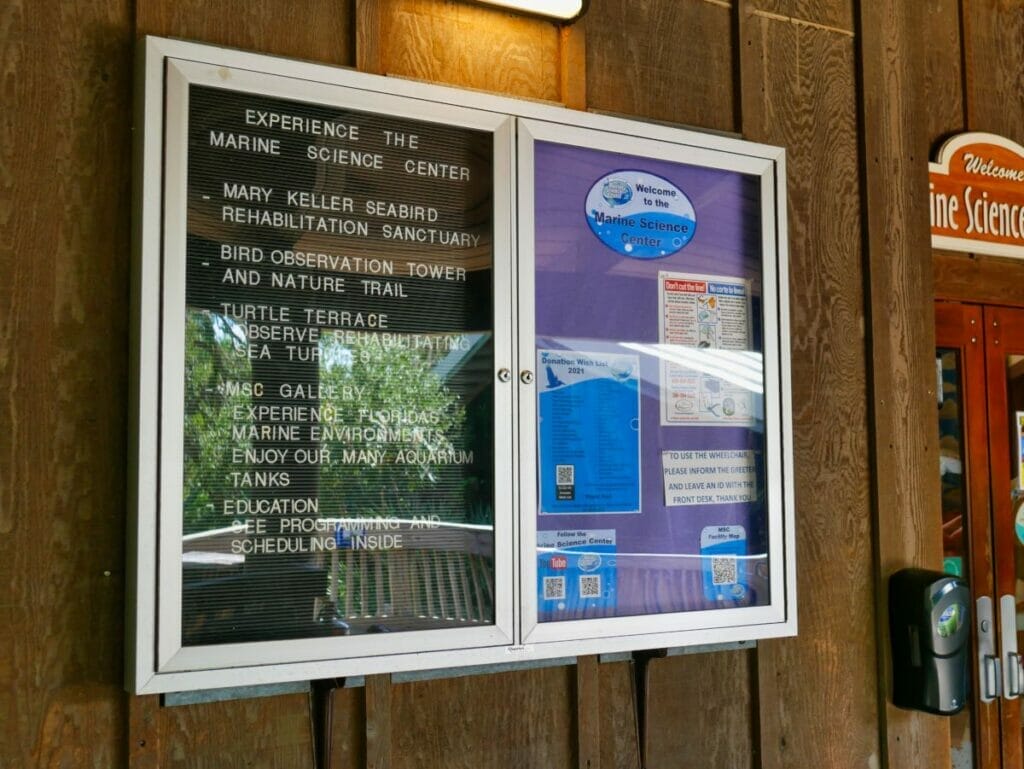
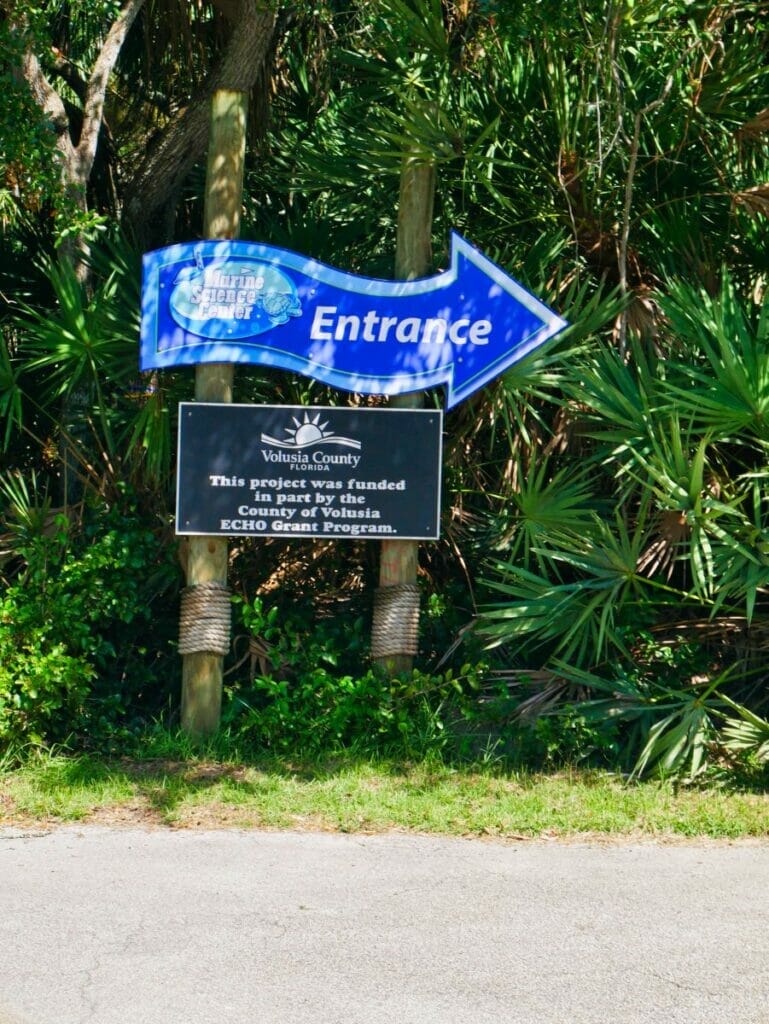
Who Should Visit the Marine Science Center in Ponce Inlet?
Anyone with an interest in aquatic life will enjoy their trip to the Marine Science Center, but our top pick for the target market is families with kids.
It’s perfectly set up for the little ones to engage with the exhibits and feel awe-inspired by the animals around them, and is small enough that you won’t worry too much about losing sight of them.
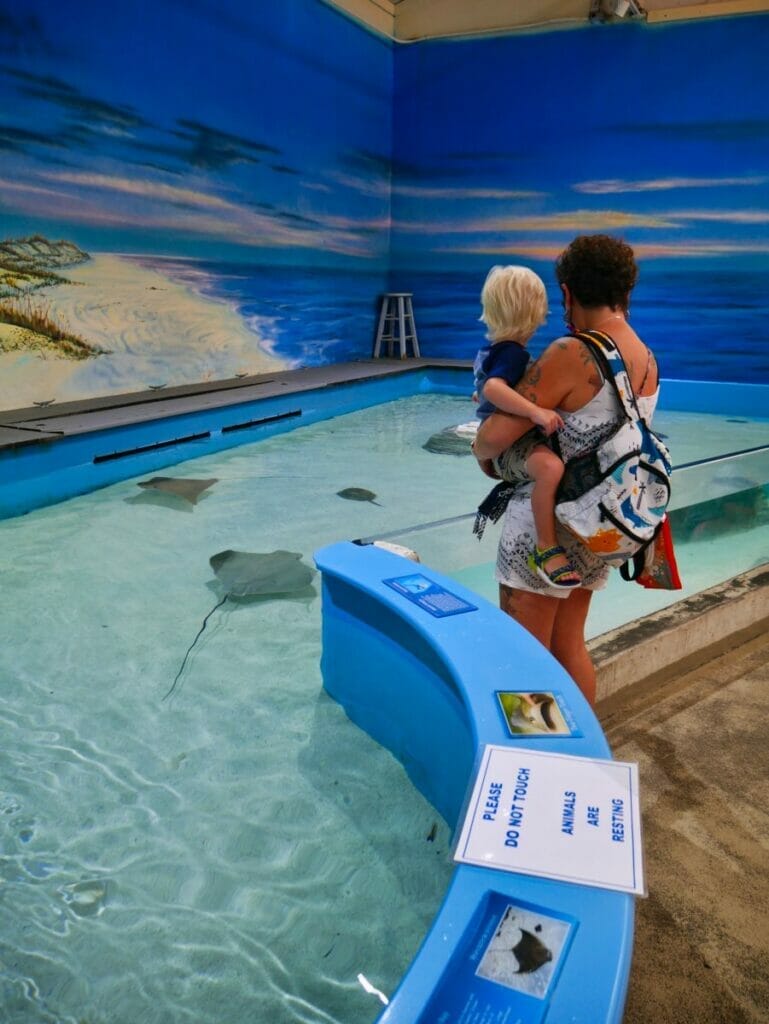
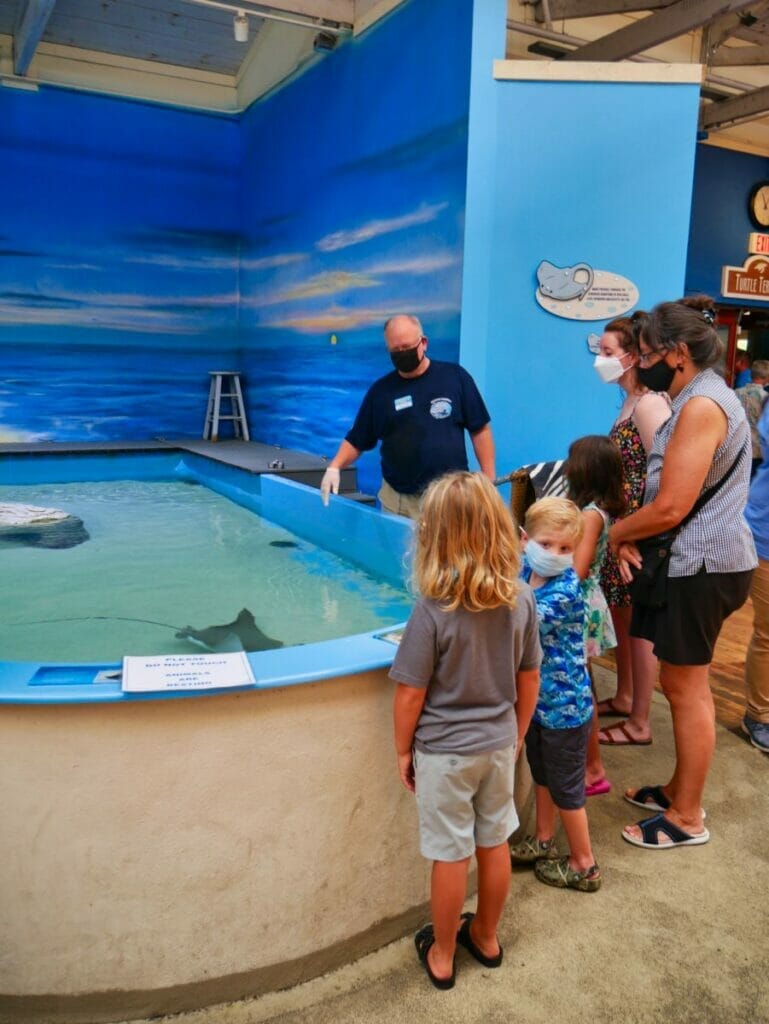
Marine Science Center Displays and Exhibits
There are quite a few different areas to explore at the Marine Science Center.
Without spoiling anything, we’ll go through them one-by-one to give you an idea of what you’ll find in that area.
Touch Pool
One of the most engaging parts of the Marine Science Center is the touch pool!
In this pool, you’ll be able to actually feel the animals and learn more about them by using the power of our sense of touch.
Stingrays are the most common marine animal you’ll find in here, but there are various feedings and talks throughout the day in which you might be able to experience other kinds of creatures.


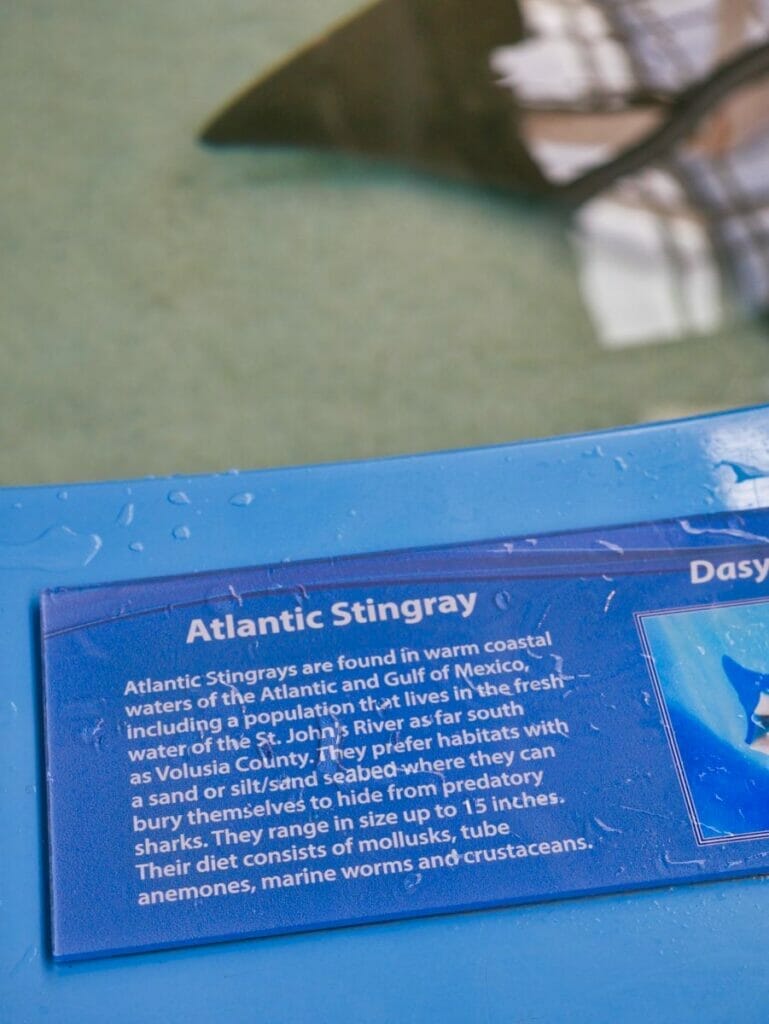
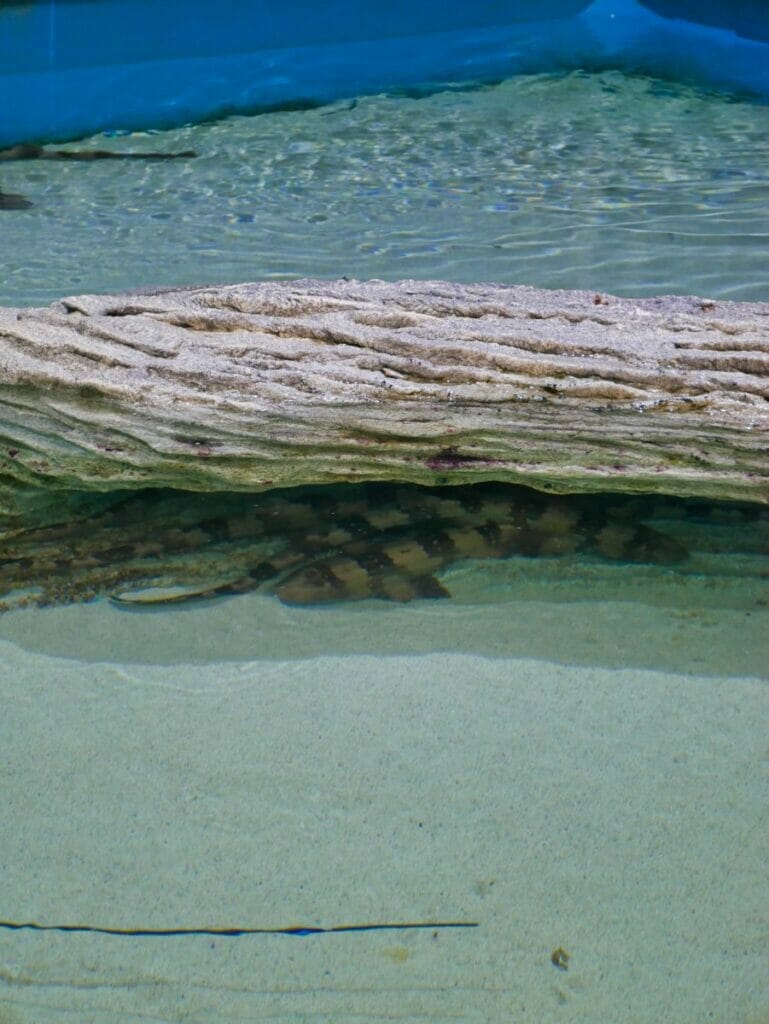

Turtle Terrace
Step outside the main exhibit area and you’ll find the Turtle Terrace, which is essentially a Turtle rehab and hospital!
In the hospital “pods,” you’ll see turtles who are recovering thanks to the help of the Marine Science Center employees and volunteers.
Here, they have a safe place to live until they’re strong enough to go back into their rightful homes, the wild.
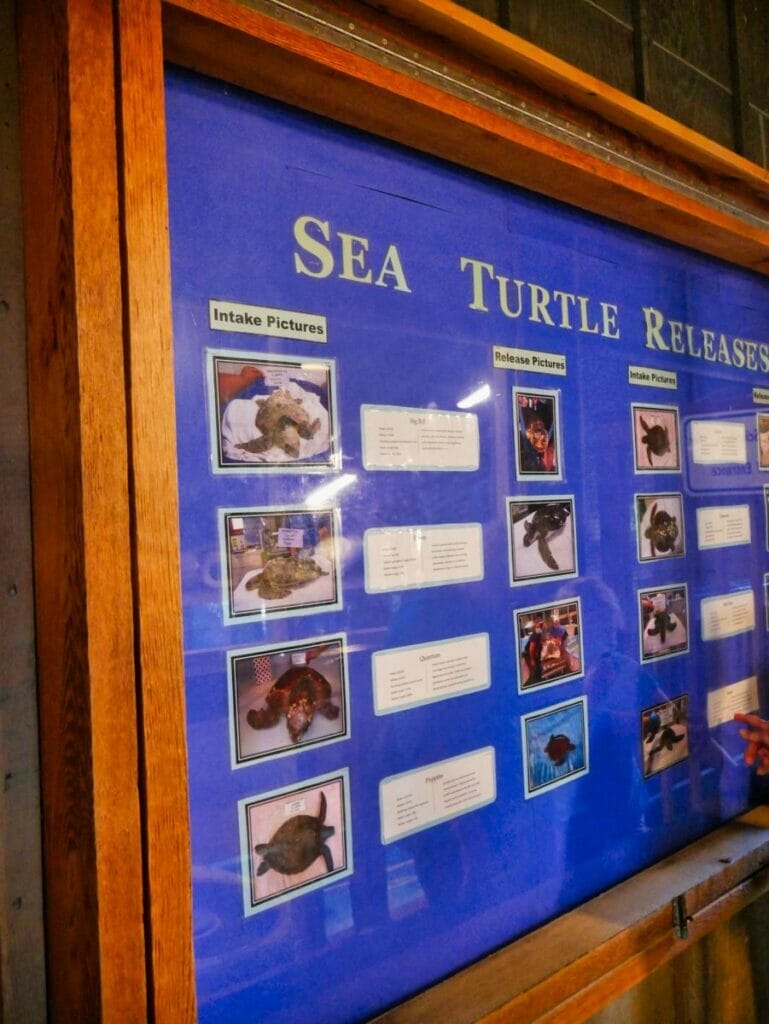
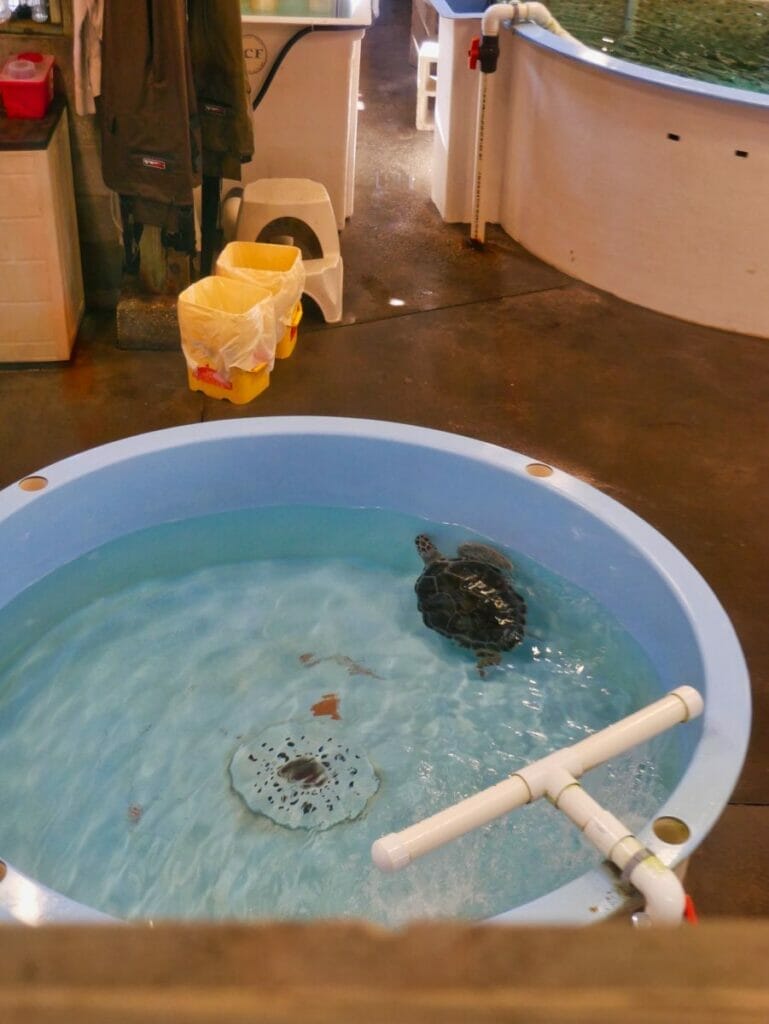
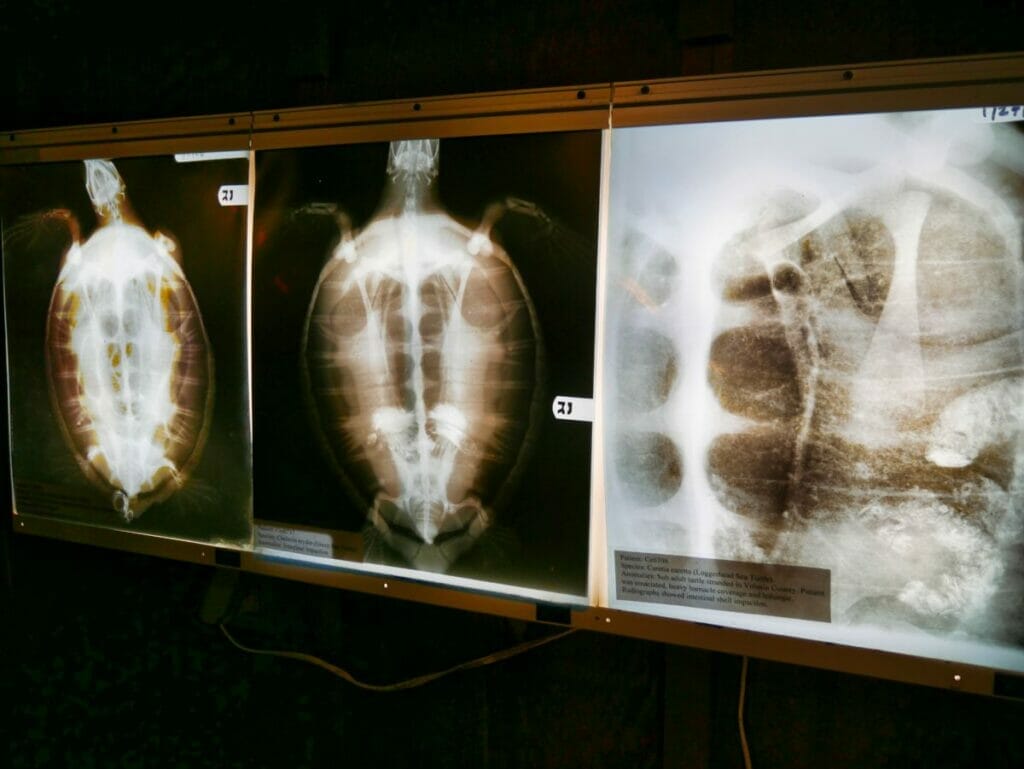
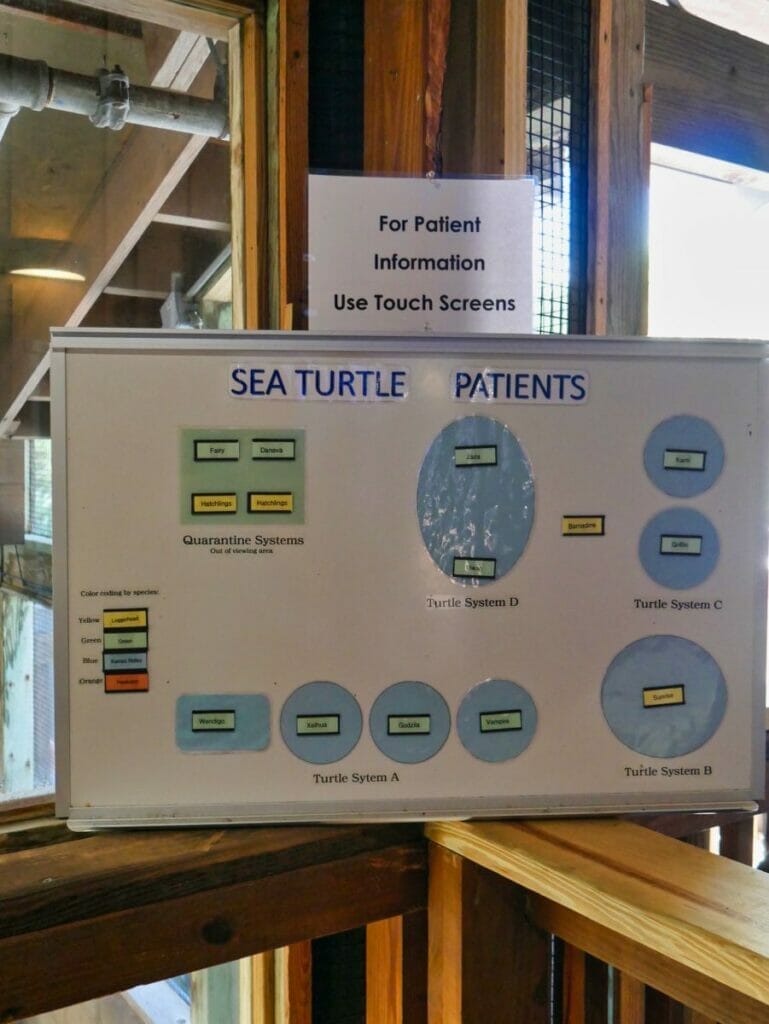
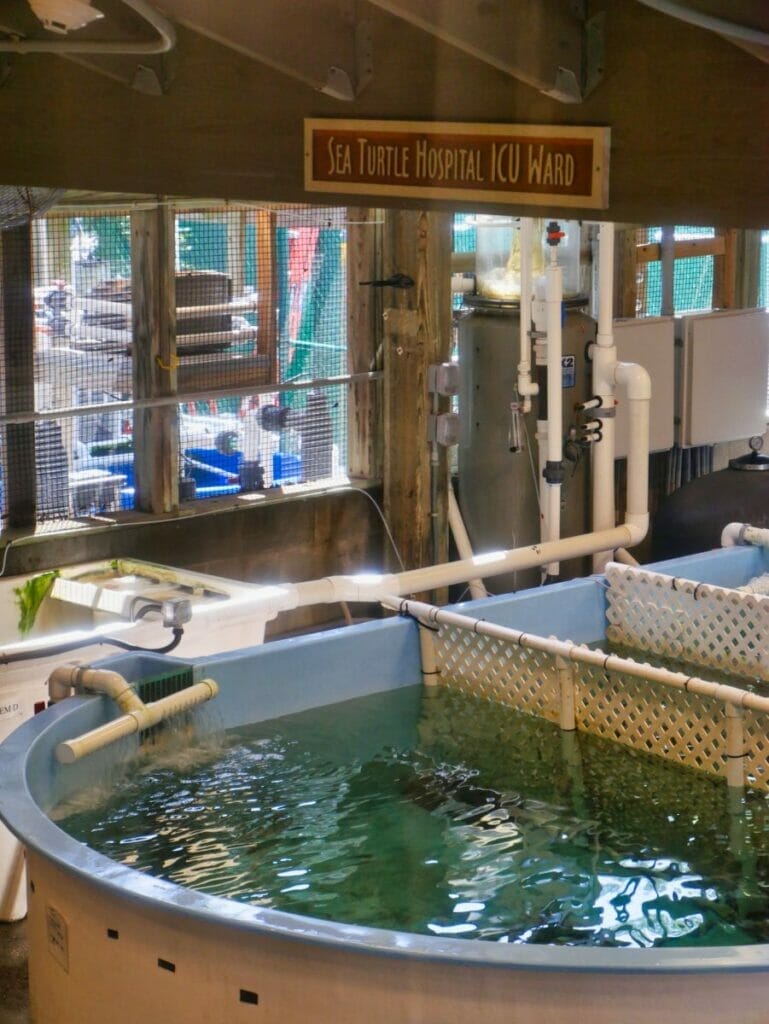
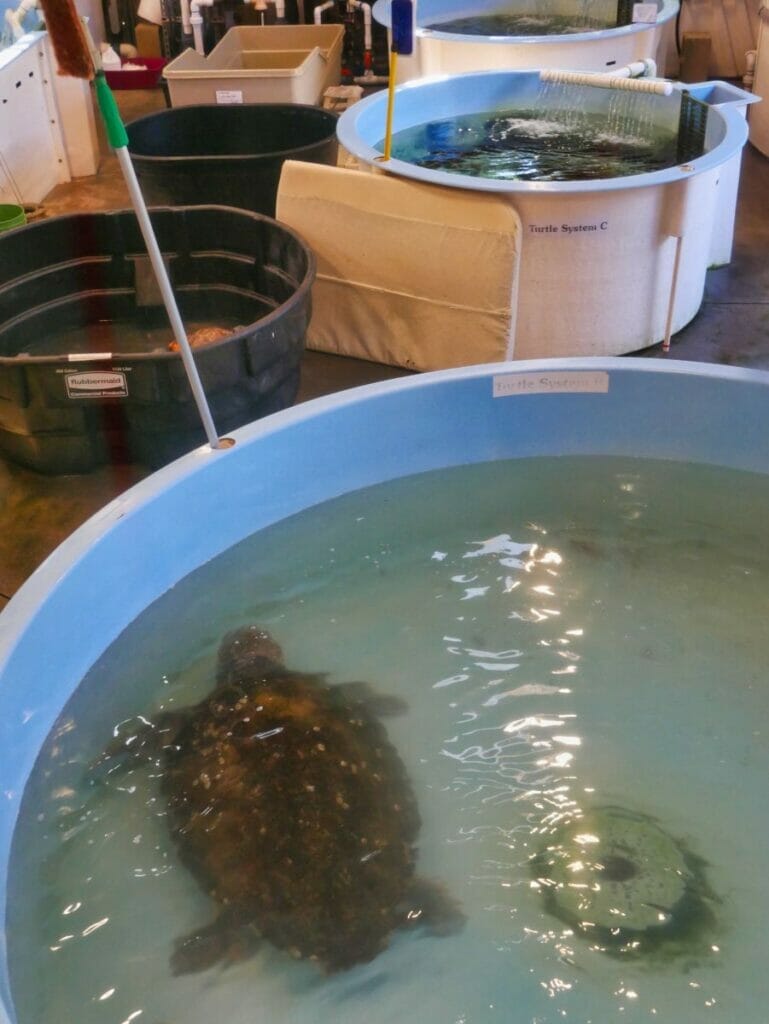
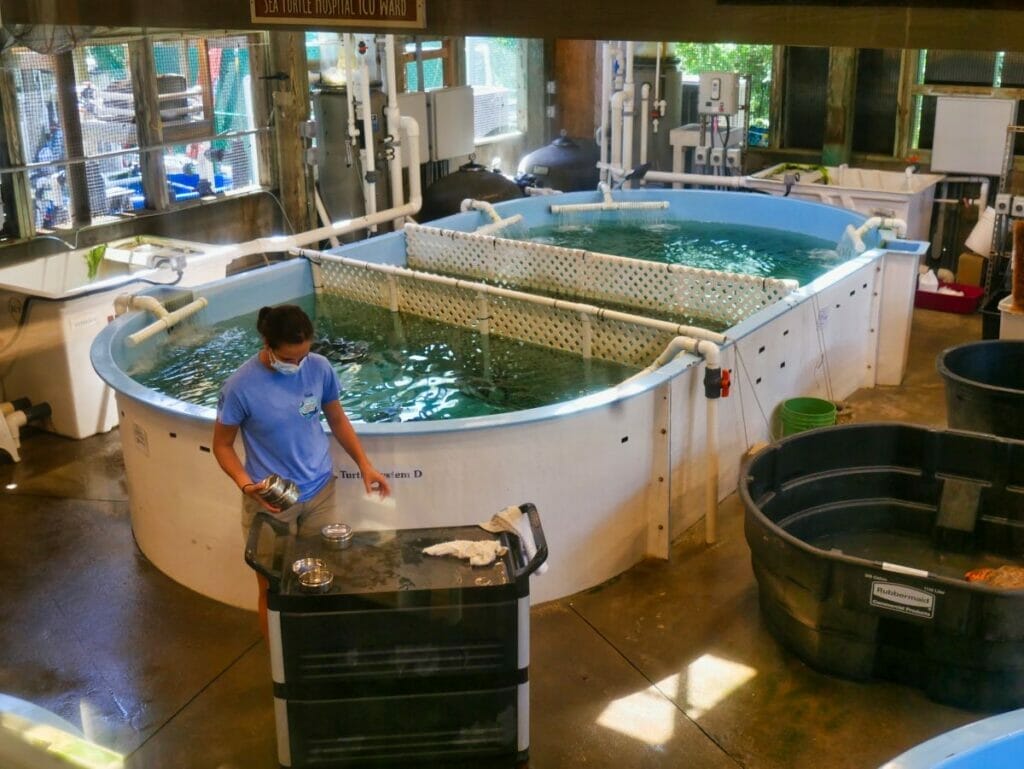
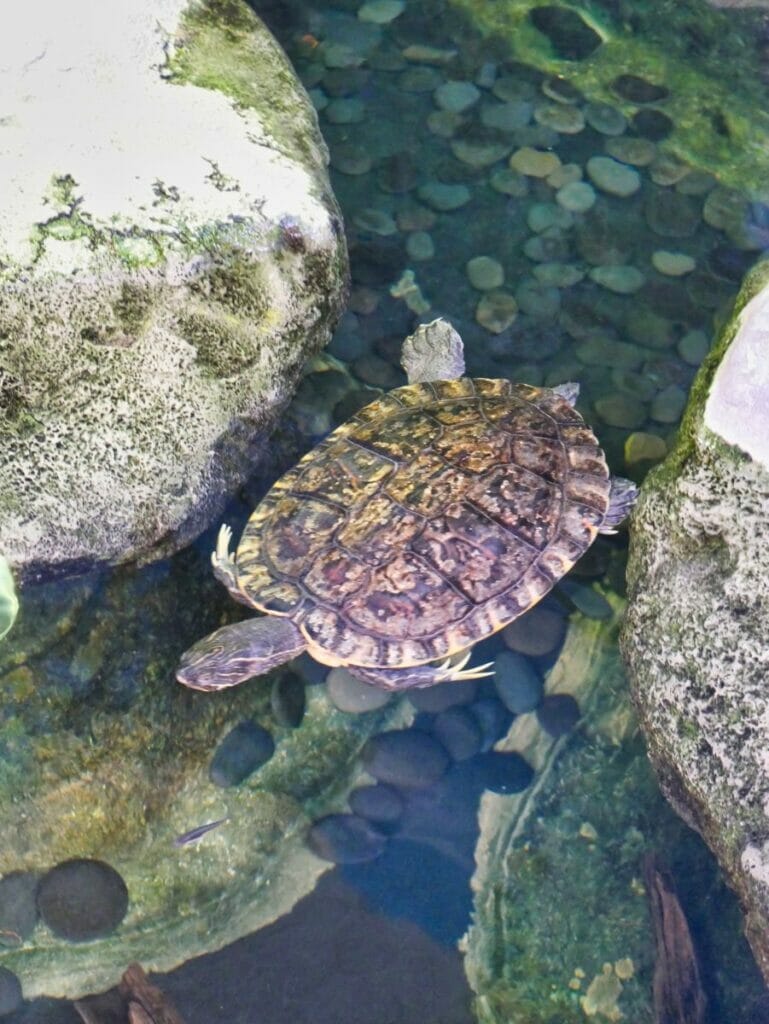
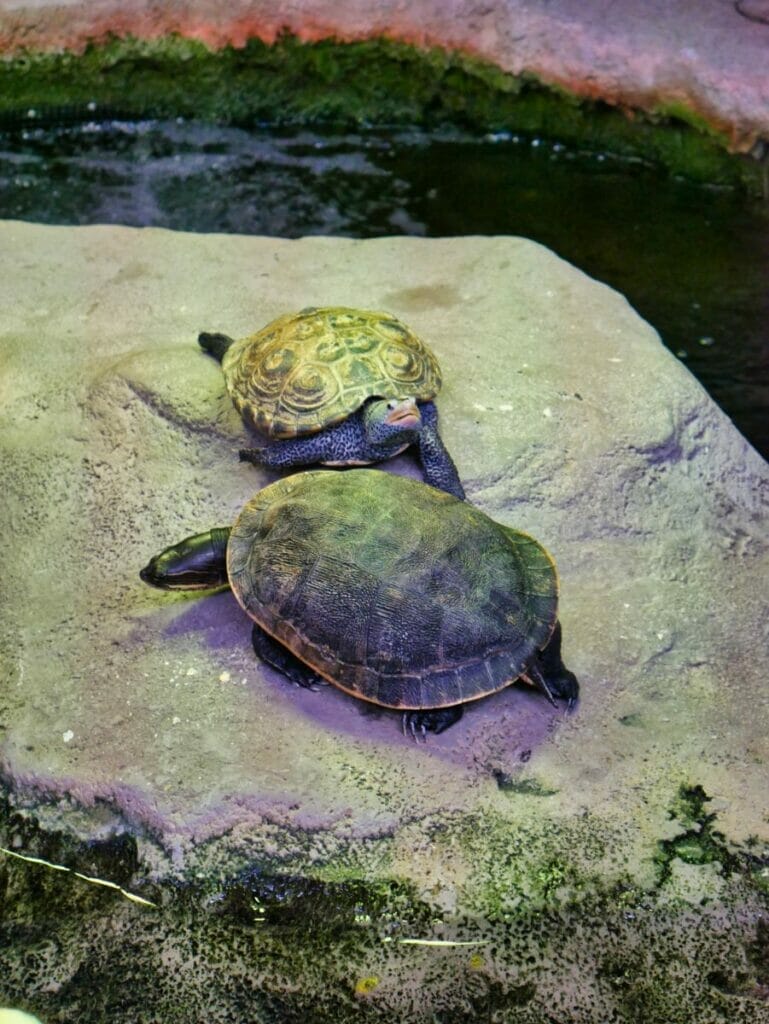
In addition to real-life turtle care, you can also check out some of the informational plaques or talk to the staff who are up on the deck with you, ready to answer your questions about these beautiful creatures and the treatments given by the staff so they can recover as much as possible.
They might be sick, injured, or newly born and not quite ready for the rough seas, but wherever they came from and no matter their issue, they’re well taken care of here.
Exhibits
When you walk into the main indoor area of the Marine Science Center, you’ll find exhibits on everything from whales to artificial reefs.
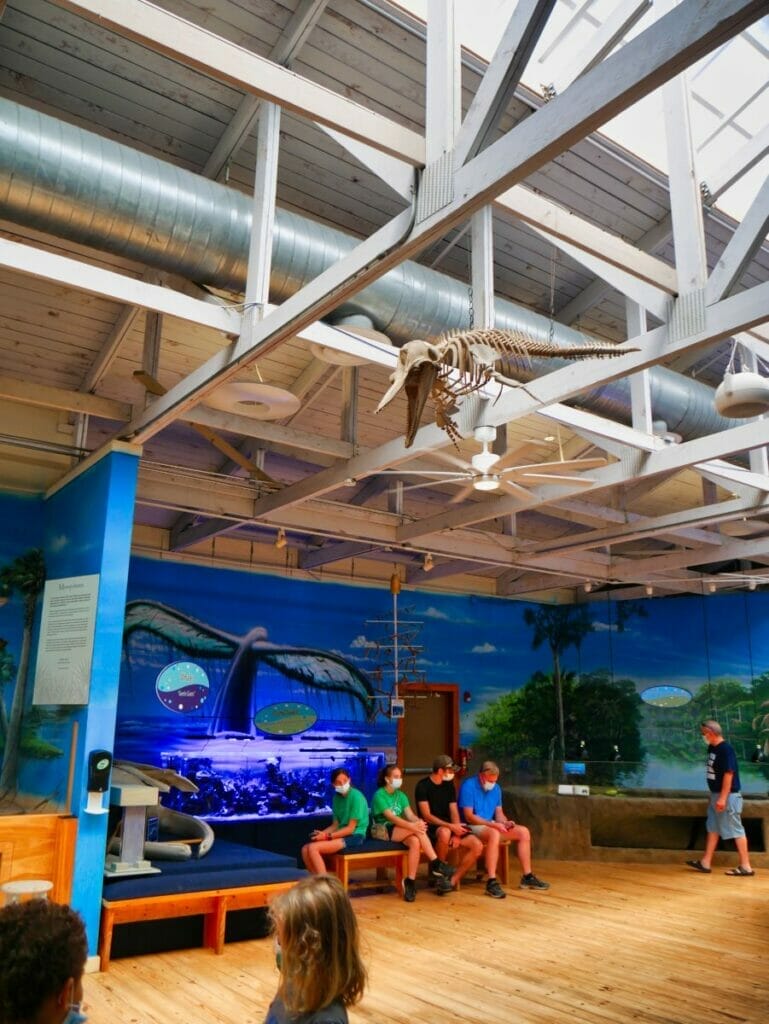
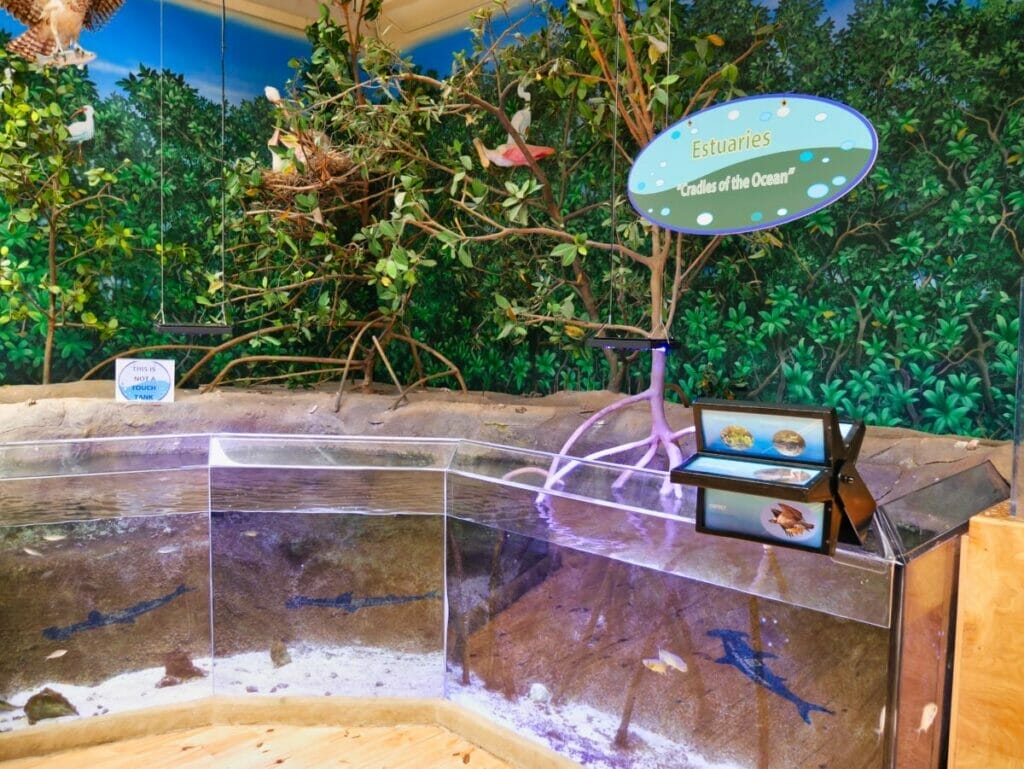
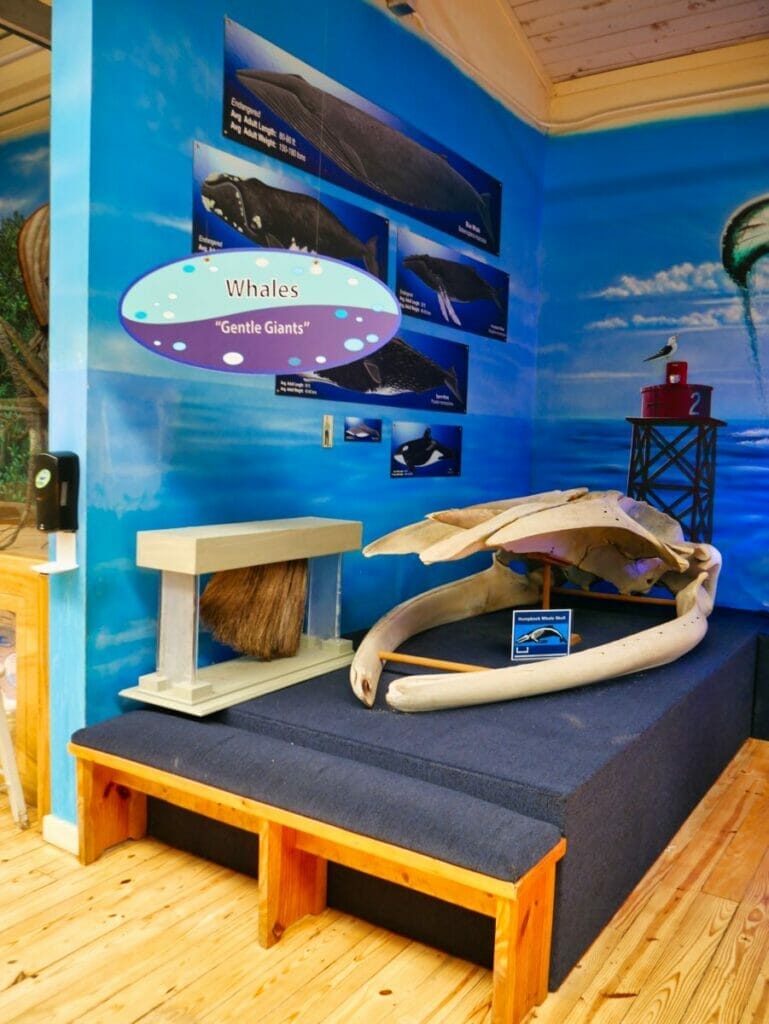
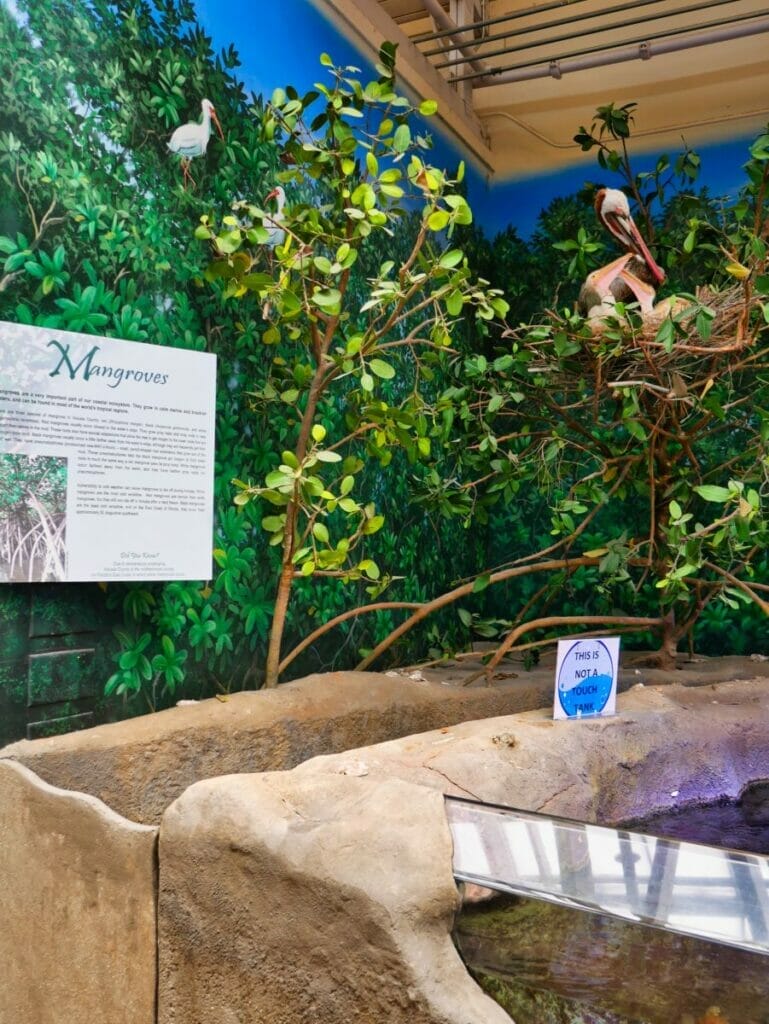
Check out the aquariums and living reefs to see creatures like fish and seahorses.
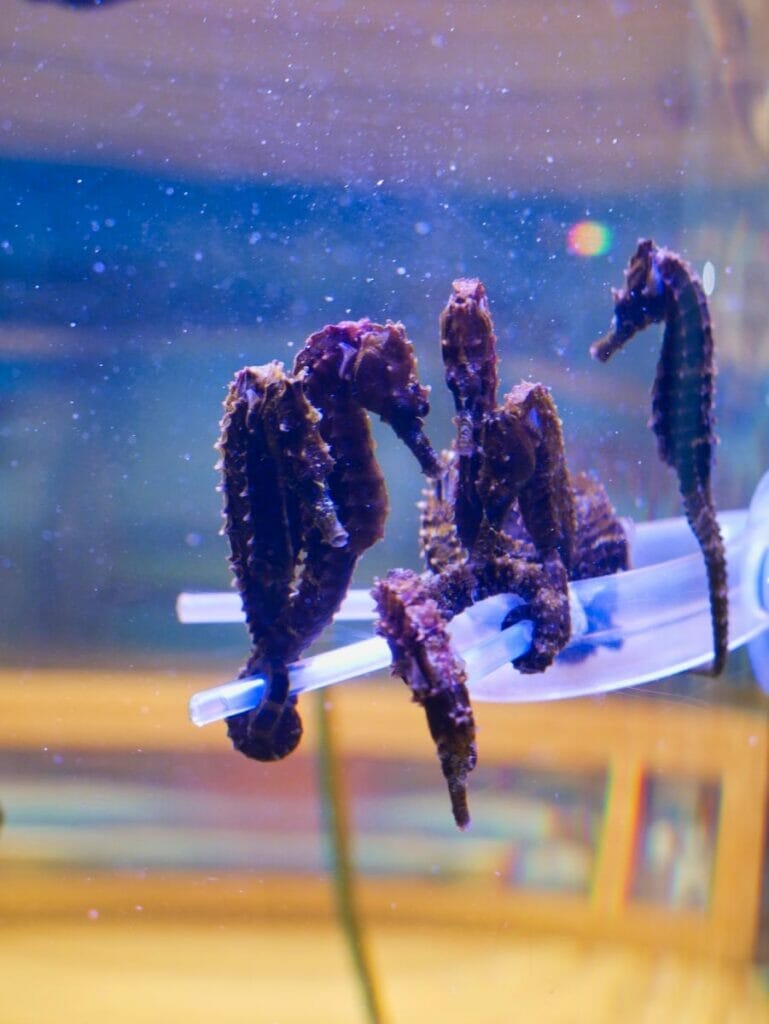
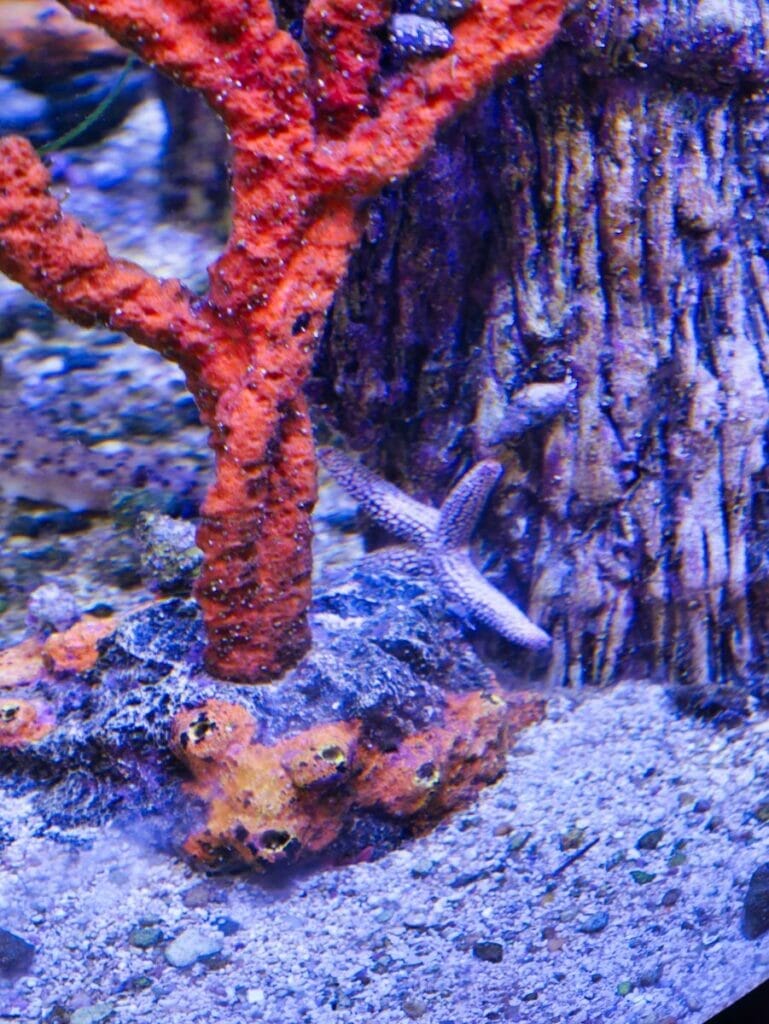
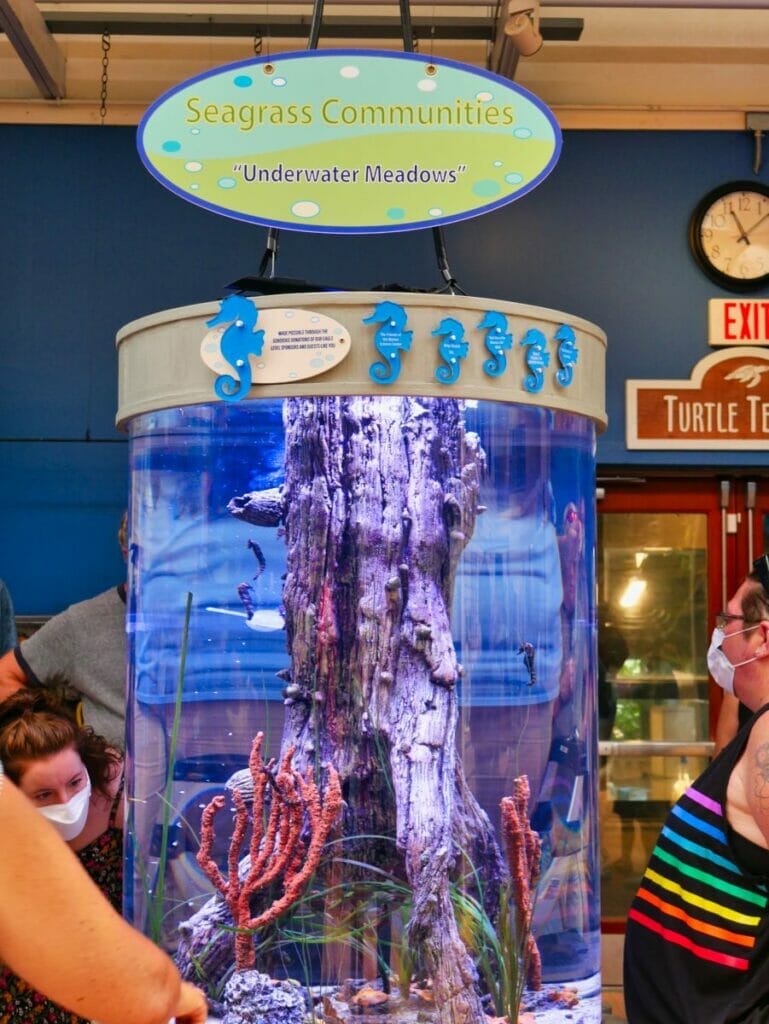
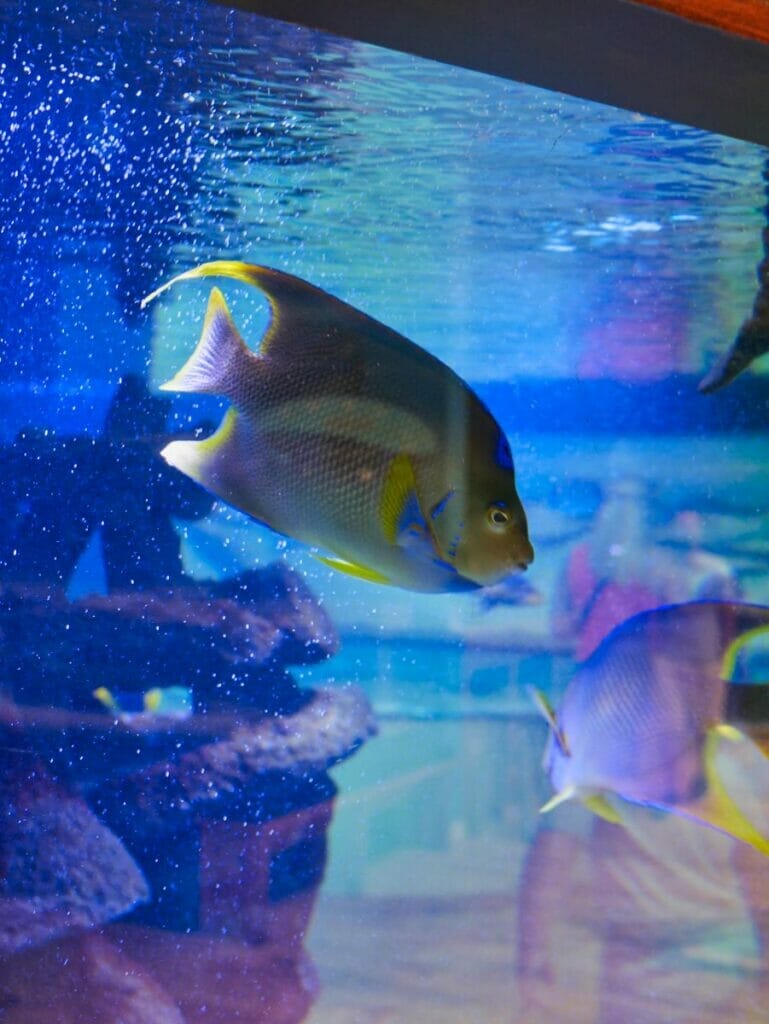
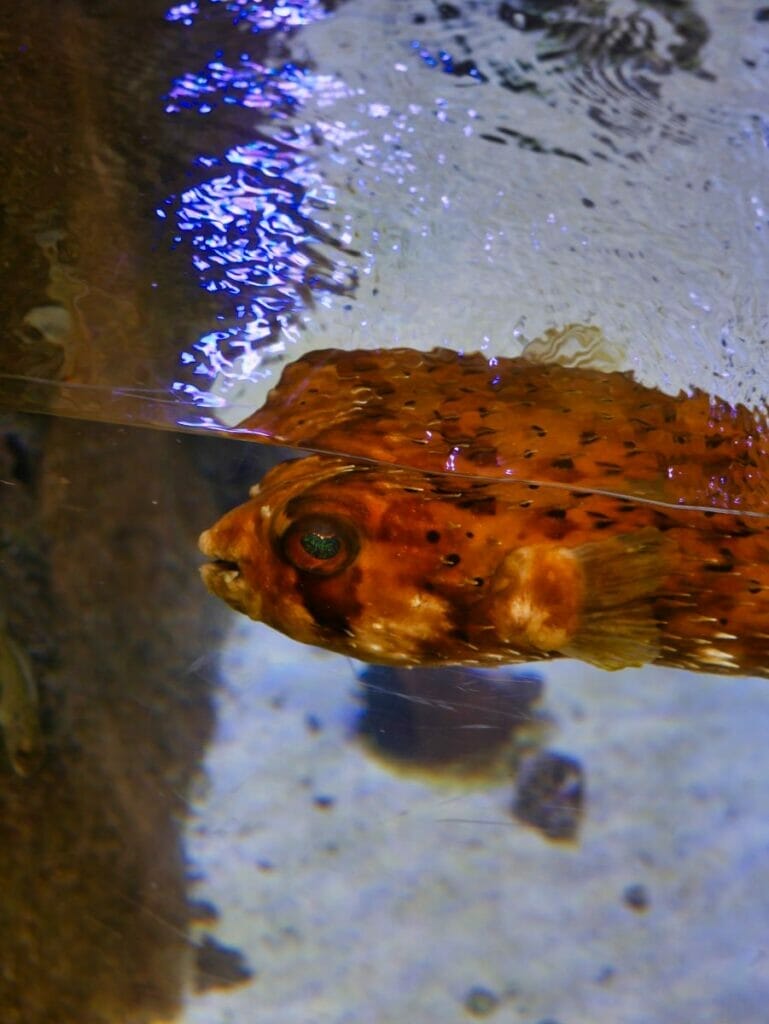
Look through the windows to see first-hand how research and animal care is conducted in the labs.
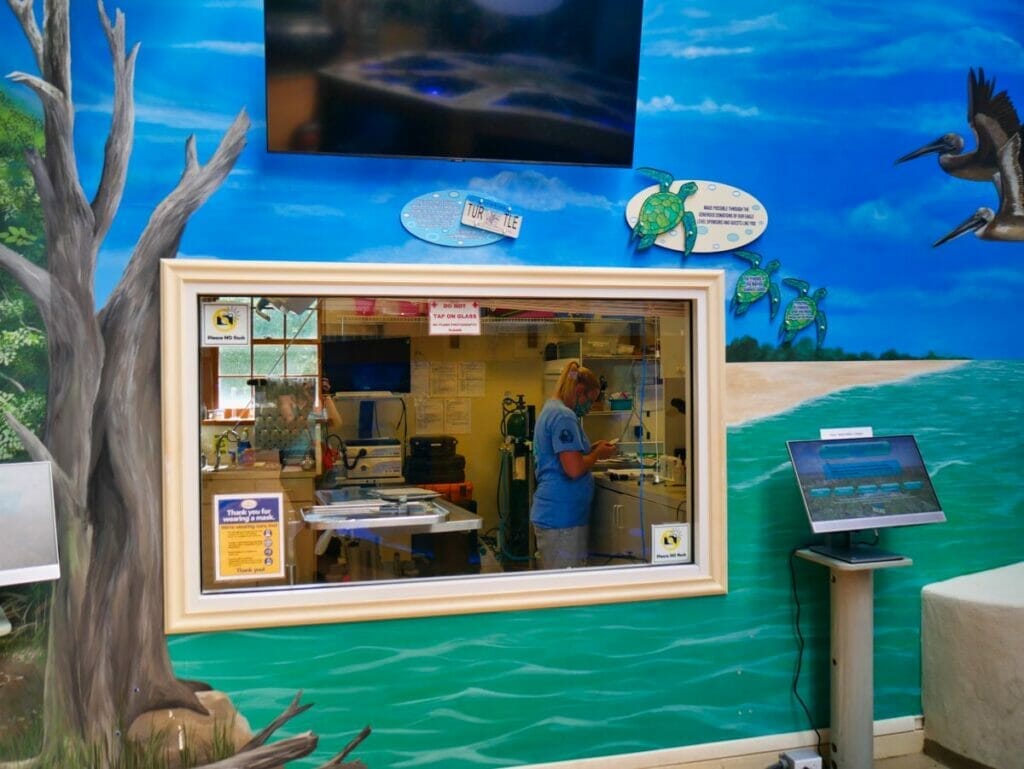
Or, check out the informational plaques like the estuaries exhibit or check out the interactive screens.
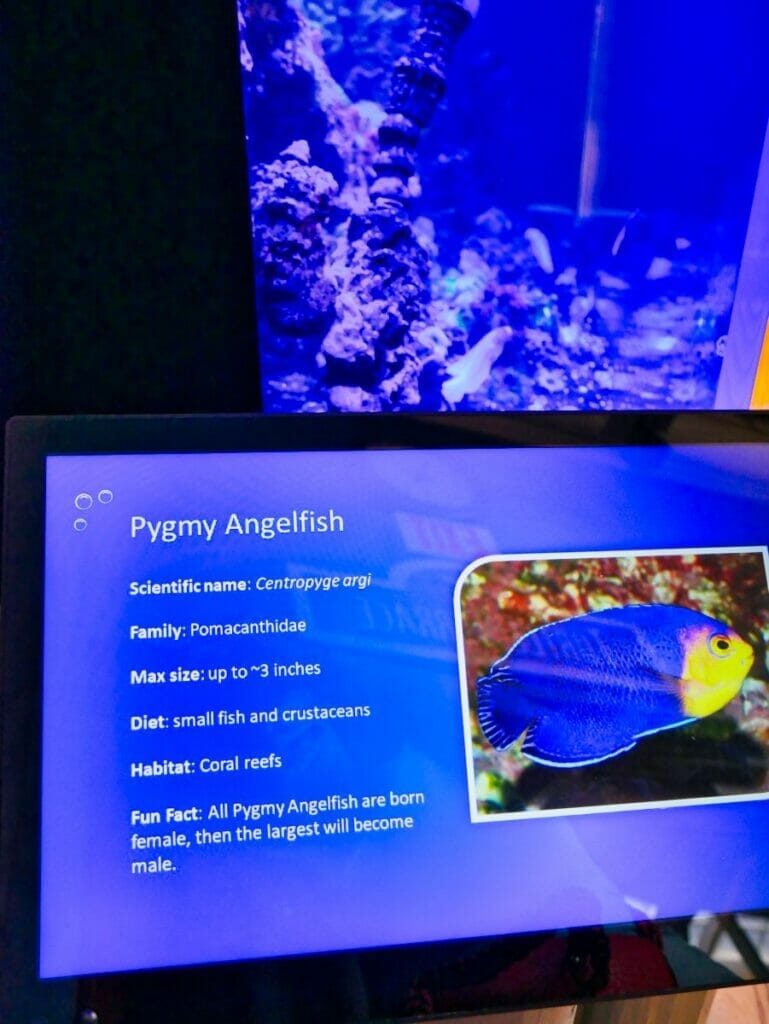
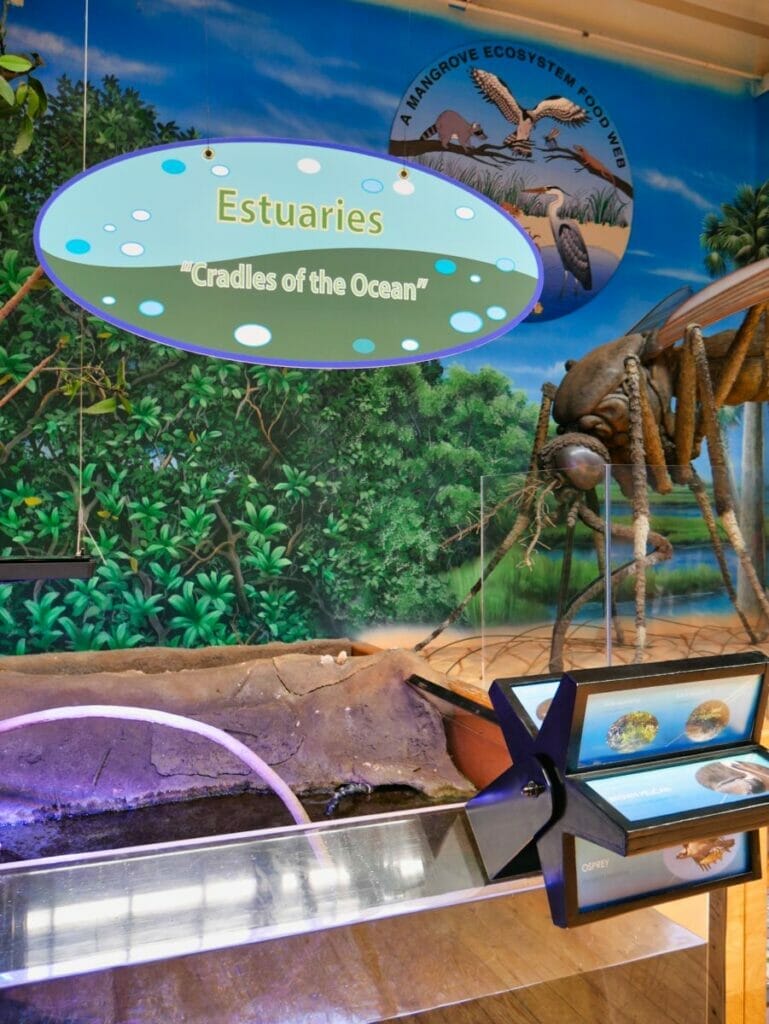
Bird Boardwalk
Right across from the main entrance to the Marine Science Center is the Mary Keller SeaBird Rehabilitation Sanctuary.
Part of this is the Bird Boardwalk, which is open to visitors!
This sanctuary takes care of sick or injured birds, and these are not on display for obvious reasons.
They are being carefully looked after and rehabbed to give them the best chance at their natural, full life.
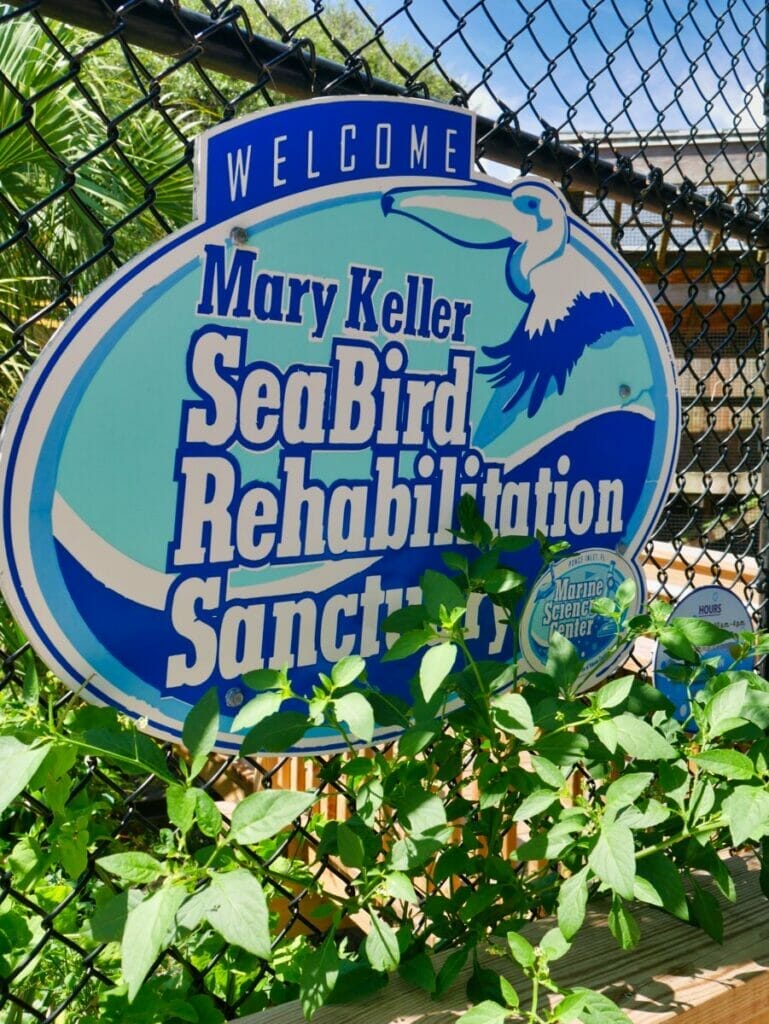
However, there are some residents who will live out their lives at the sanctuary as they are unable to thrive in the wild, and you can encounter them on the bird boardwalk.
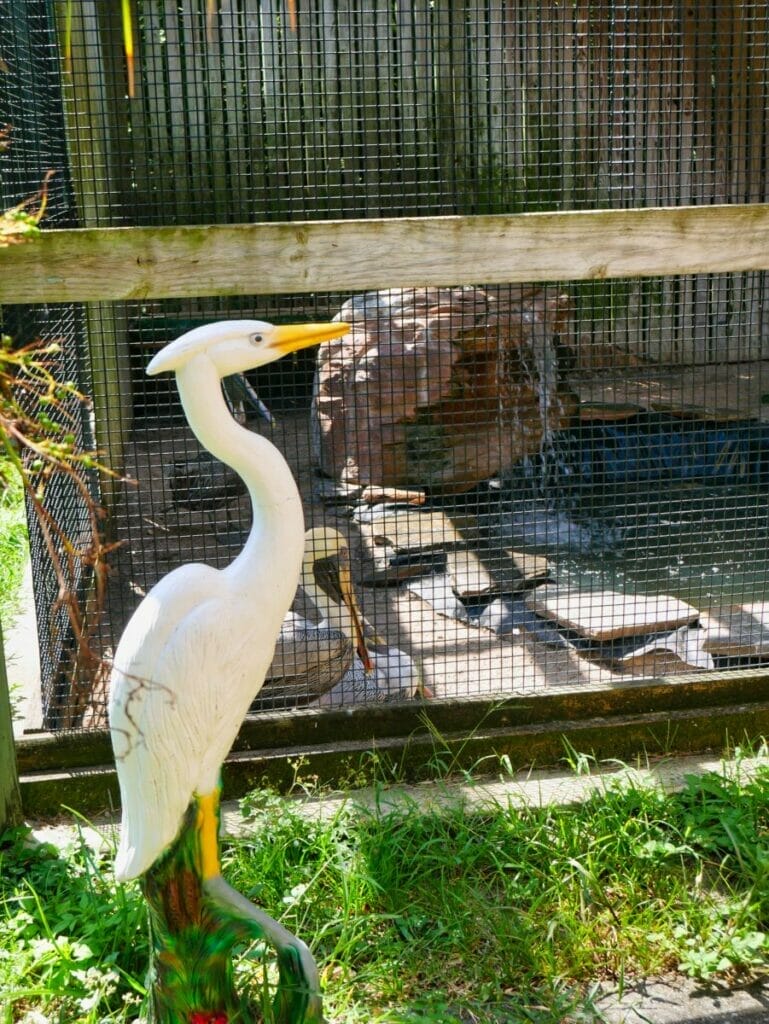
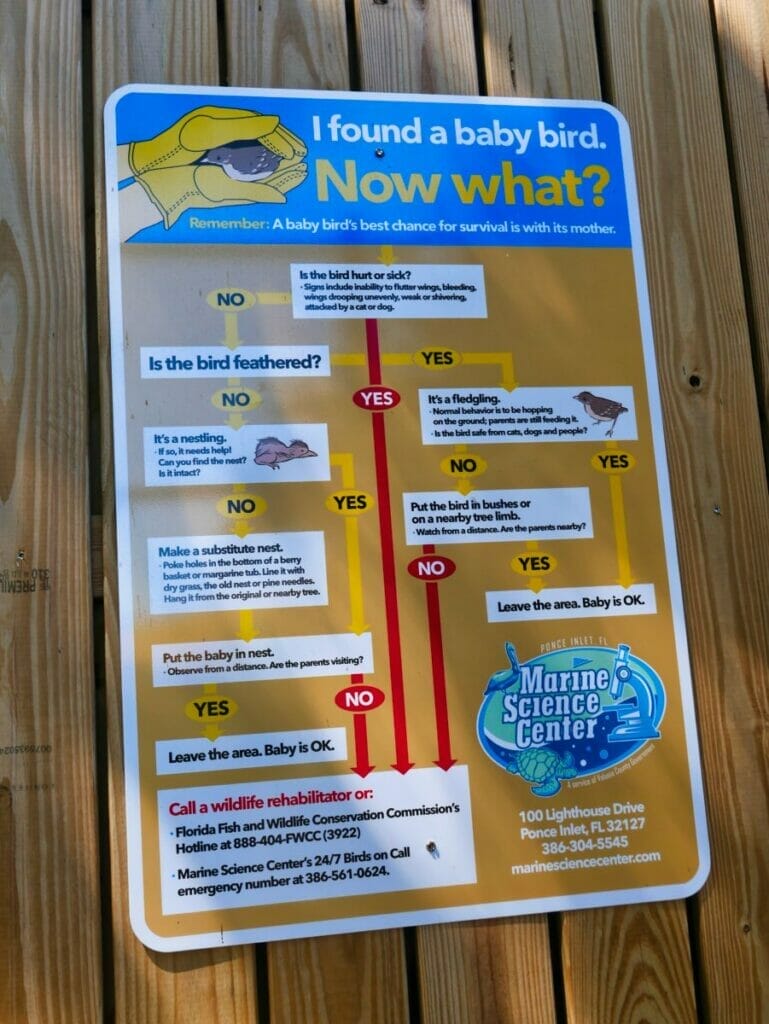
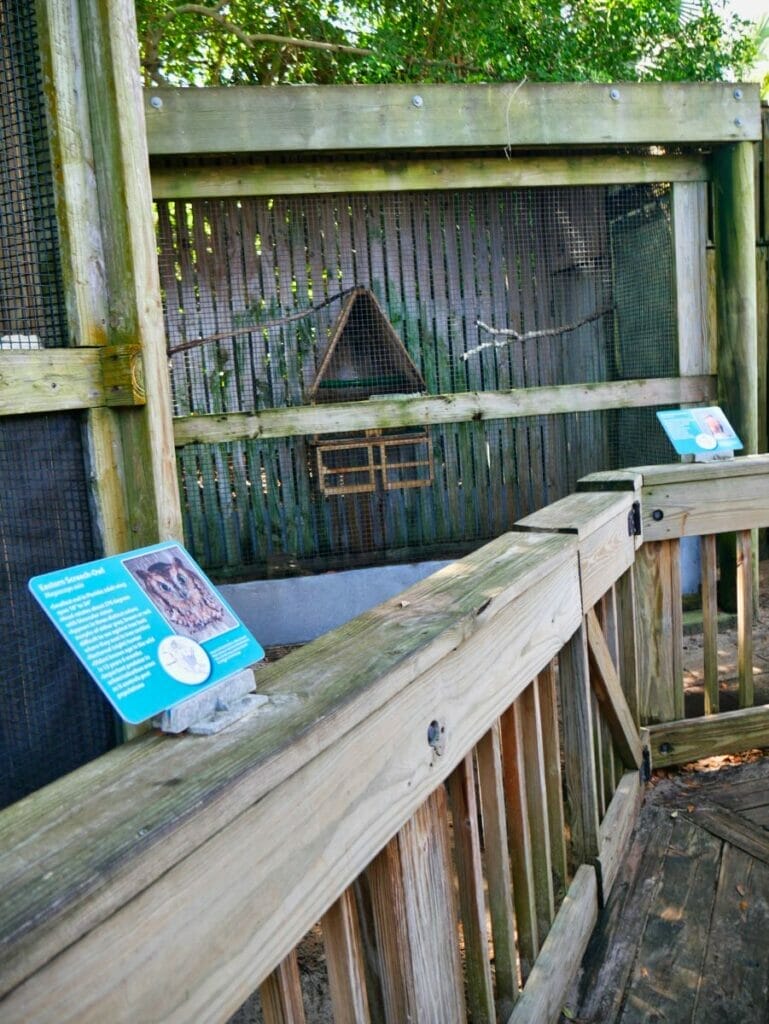
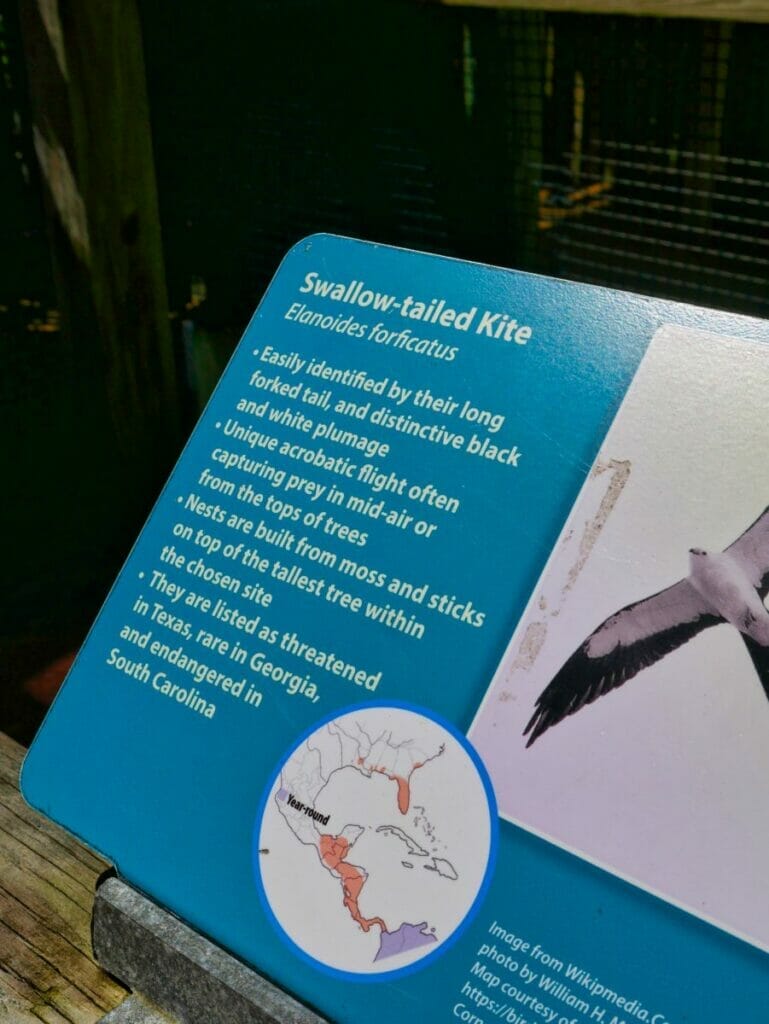
From the majestic bald eagles to pelicans, hawks, and owls, this boardwalk is a cacophony of sound mixed with some important conservation efforts and a nice outdoor-area to catch some Vitamin D while supporting the animals.
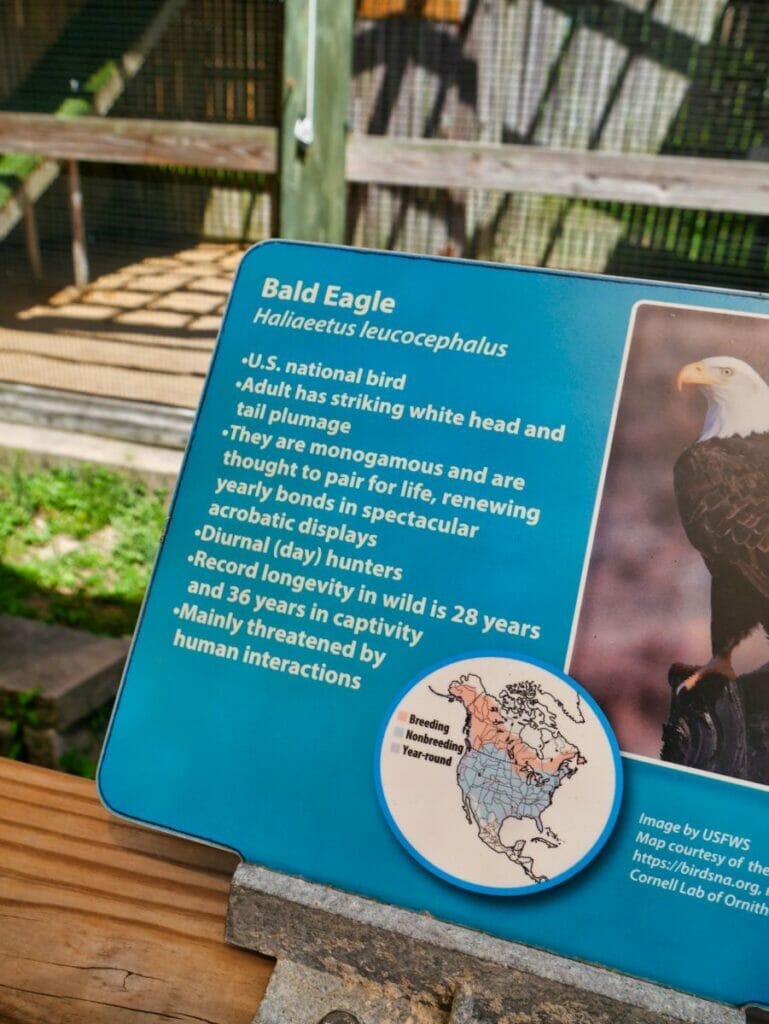
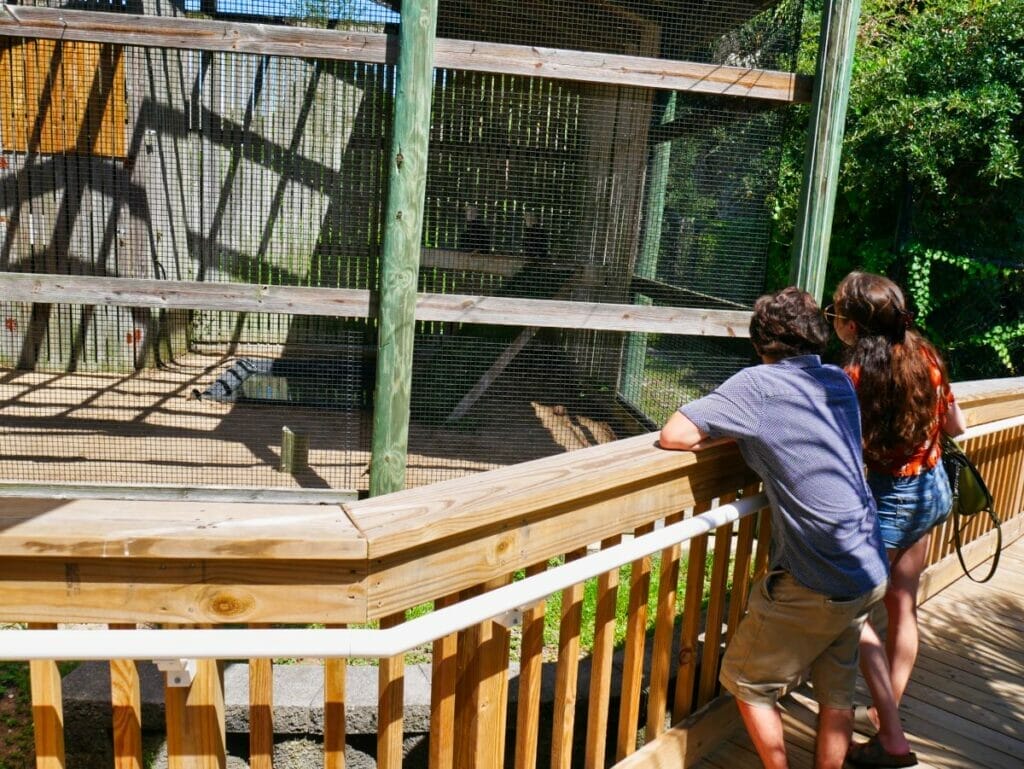
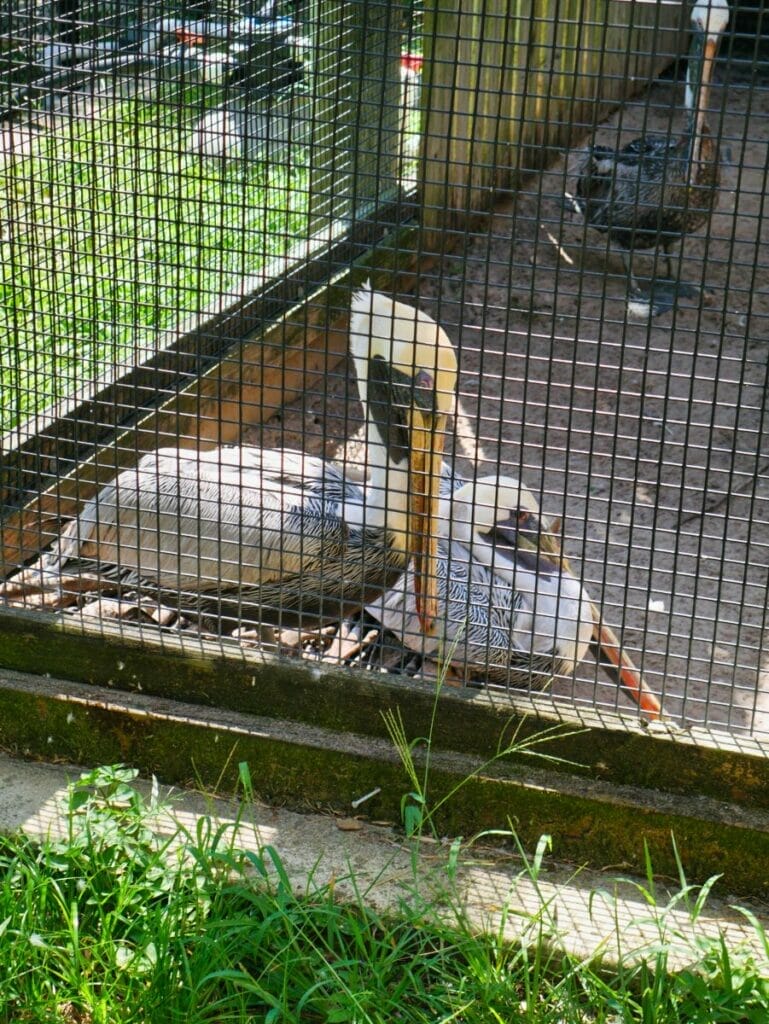
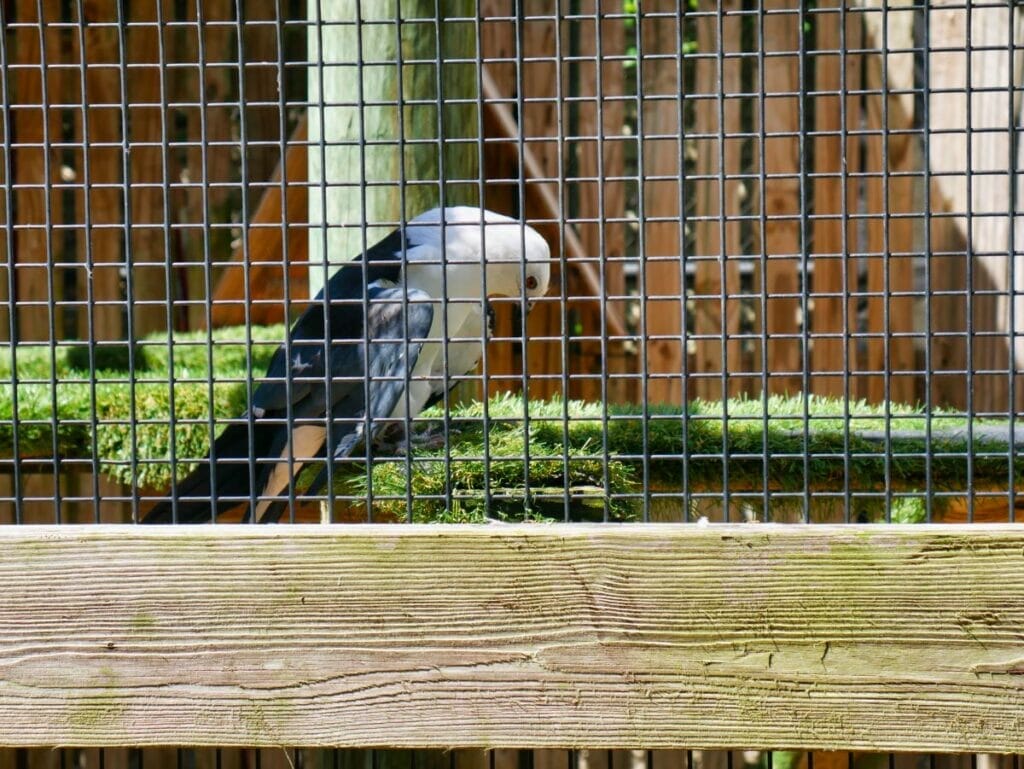
Nature Trail
To burn off some steam and explore the non-marine side to the Marine Science Center (all of the ecosystems work together, remember!), explore the nature trail.
This starts off going through a nice little area with some statues of things like a Conch and an eagle, and then takes you along a boardwalk.
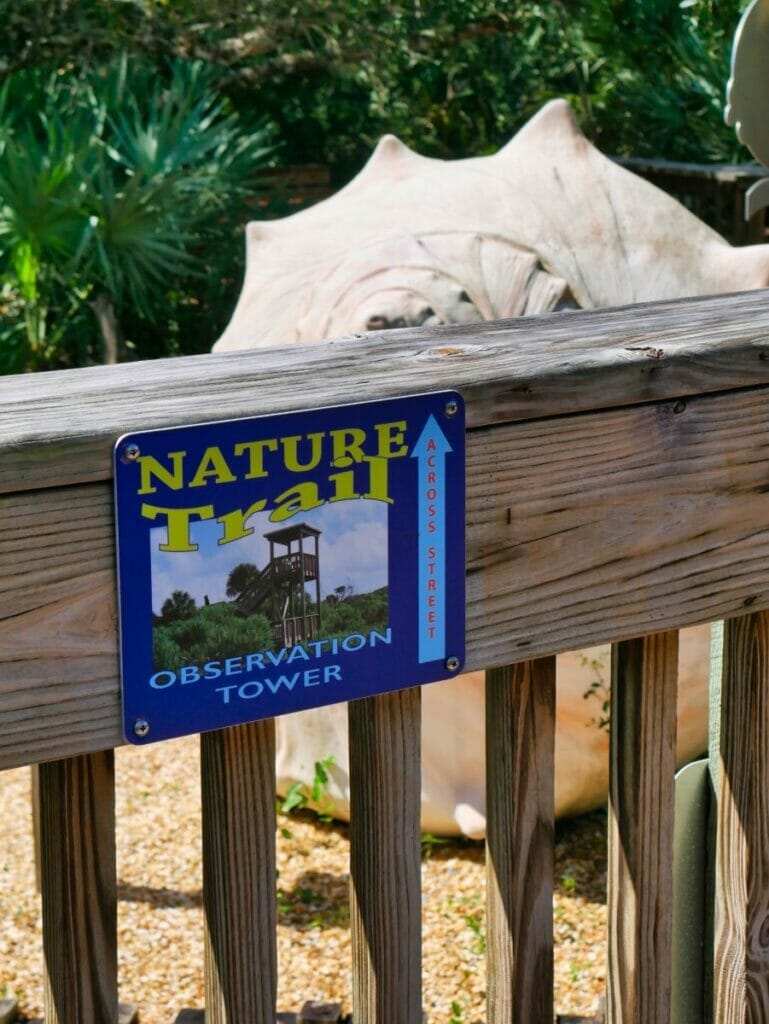
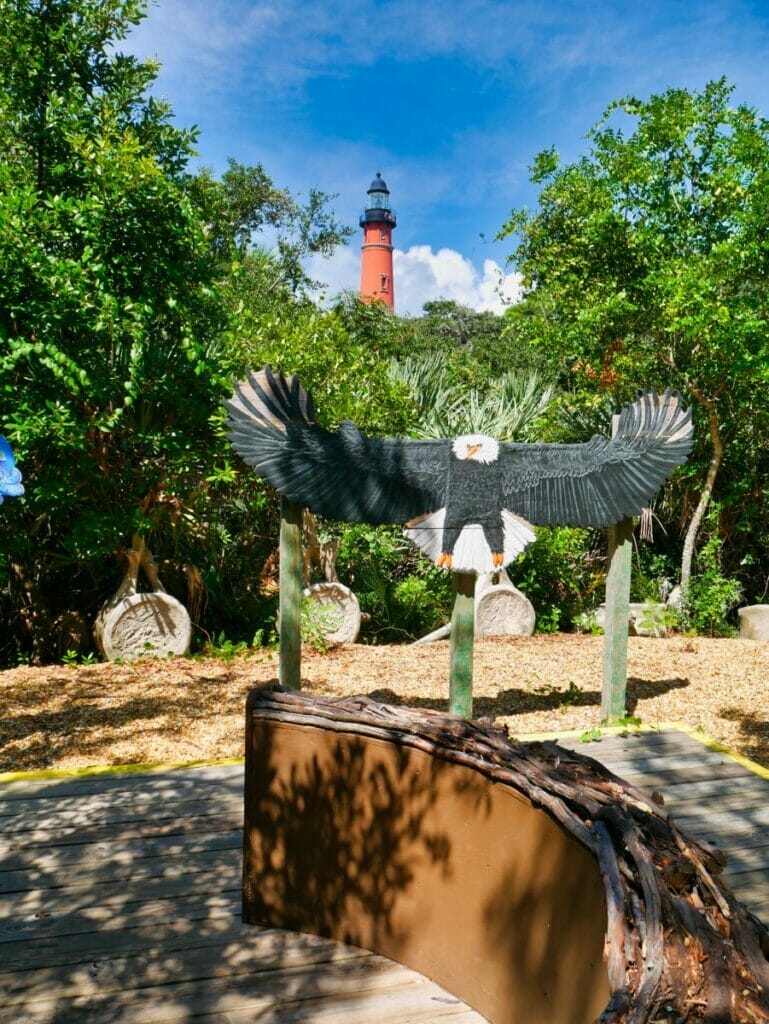
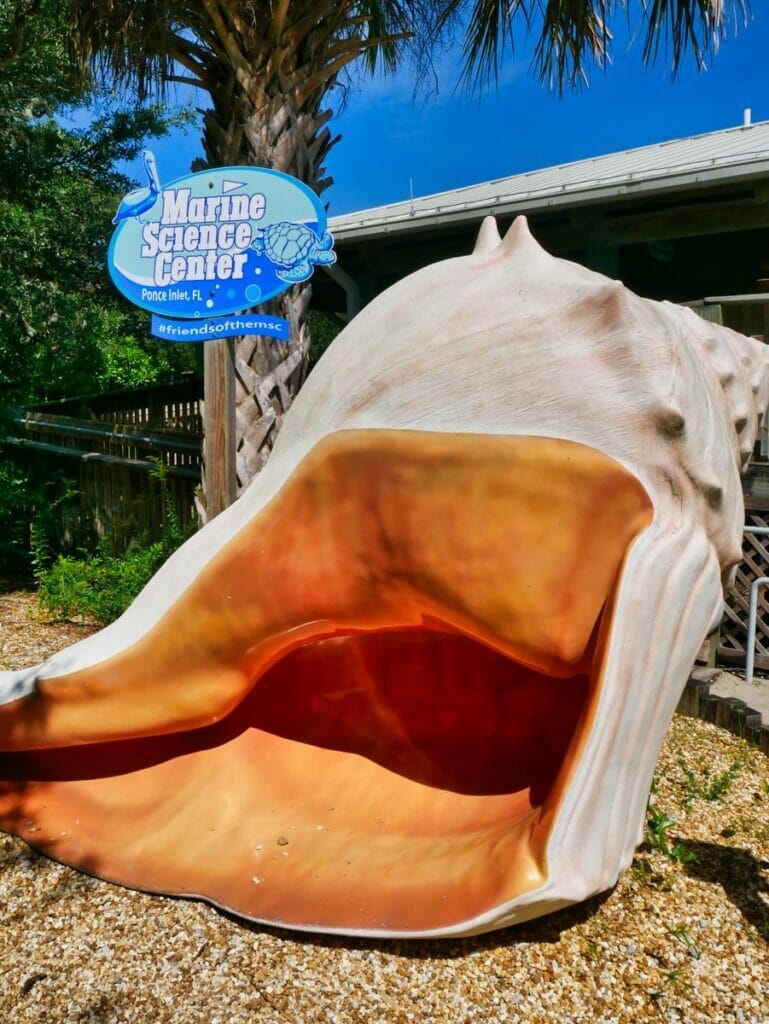
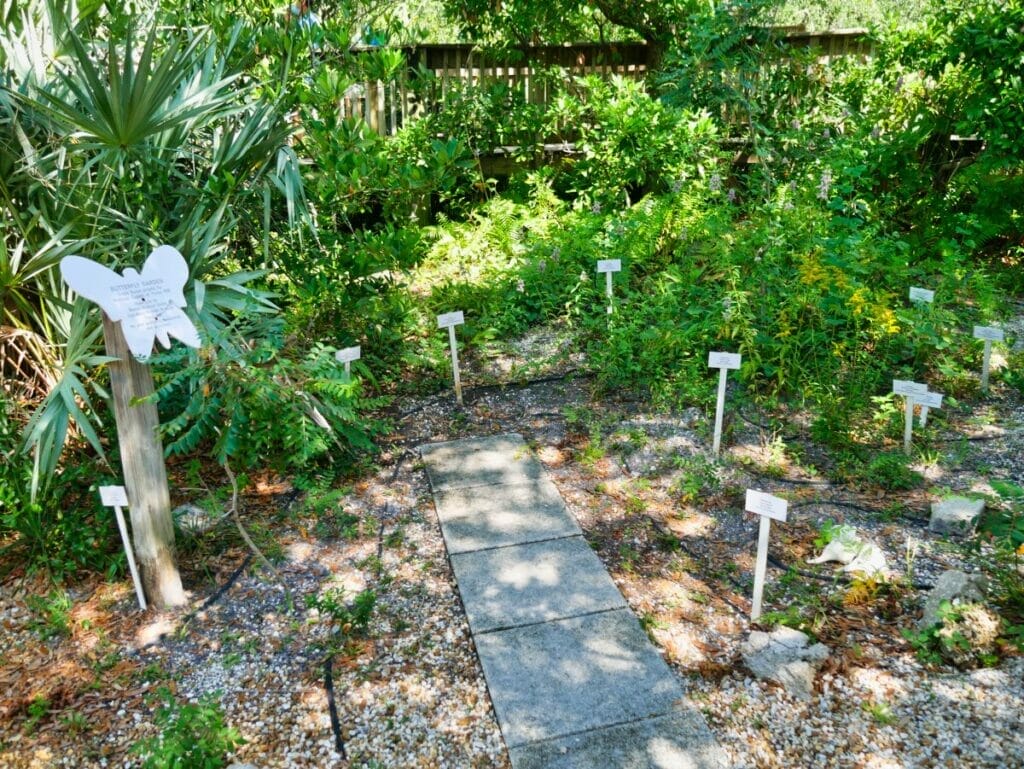
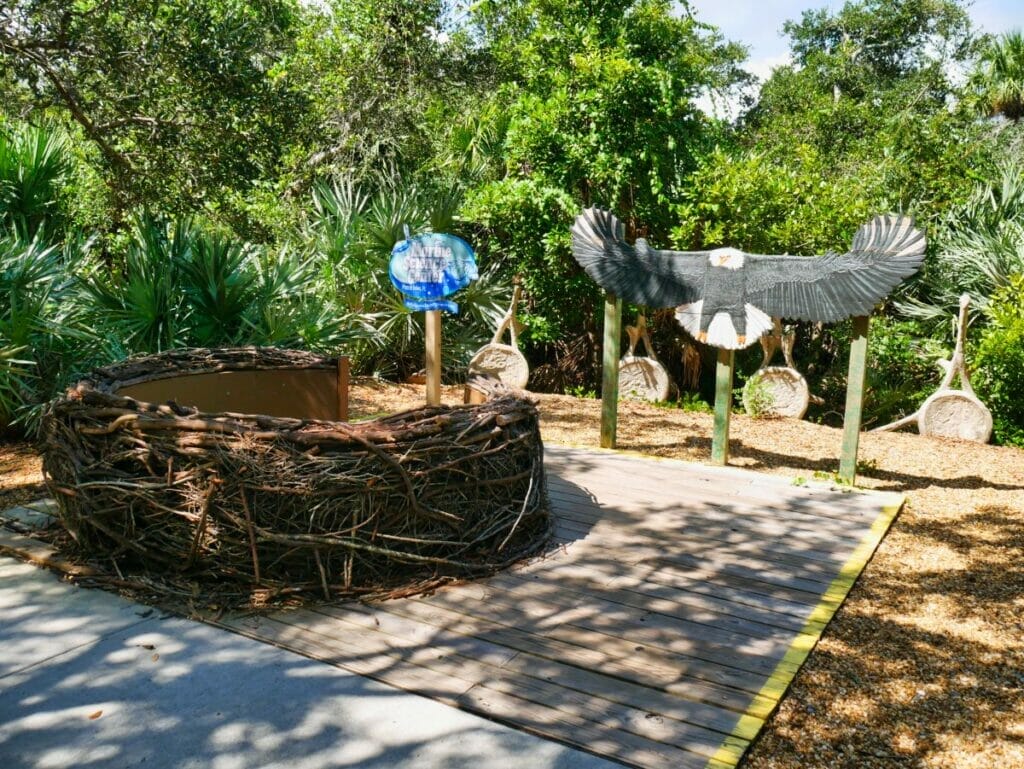
At the end of the boardwalk, you’ll find a fantastic view and some land-animal spotting (we saw raccoons while we were there!)
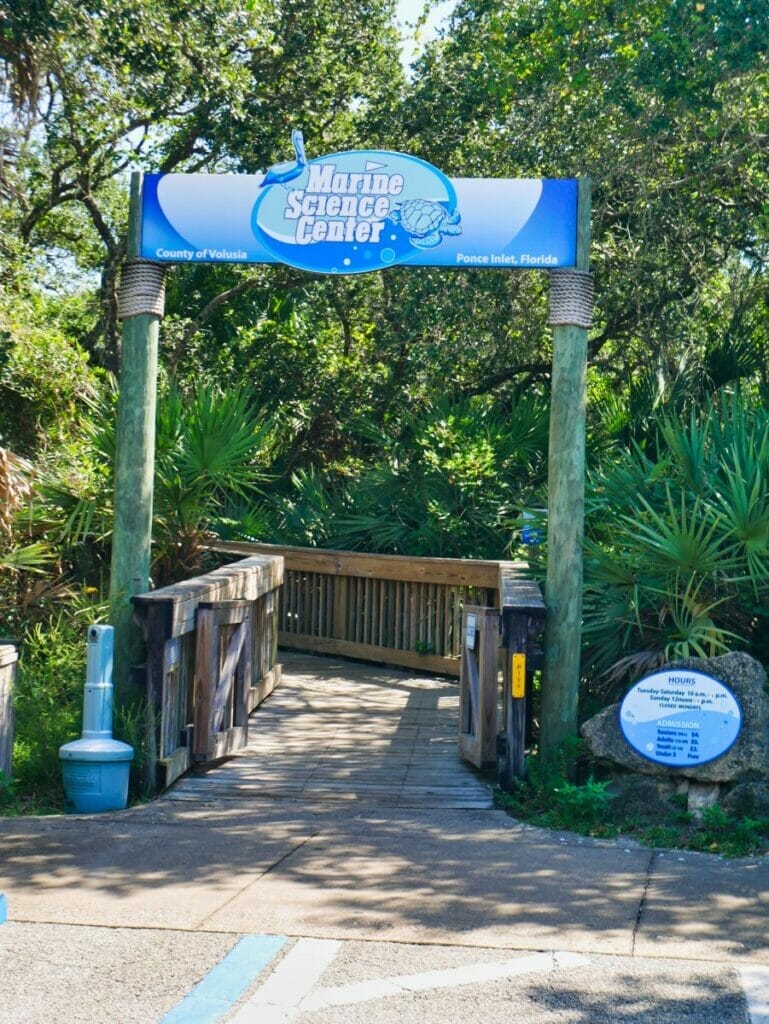
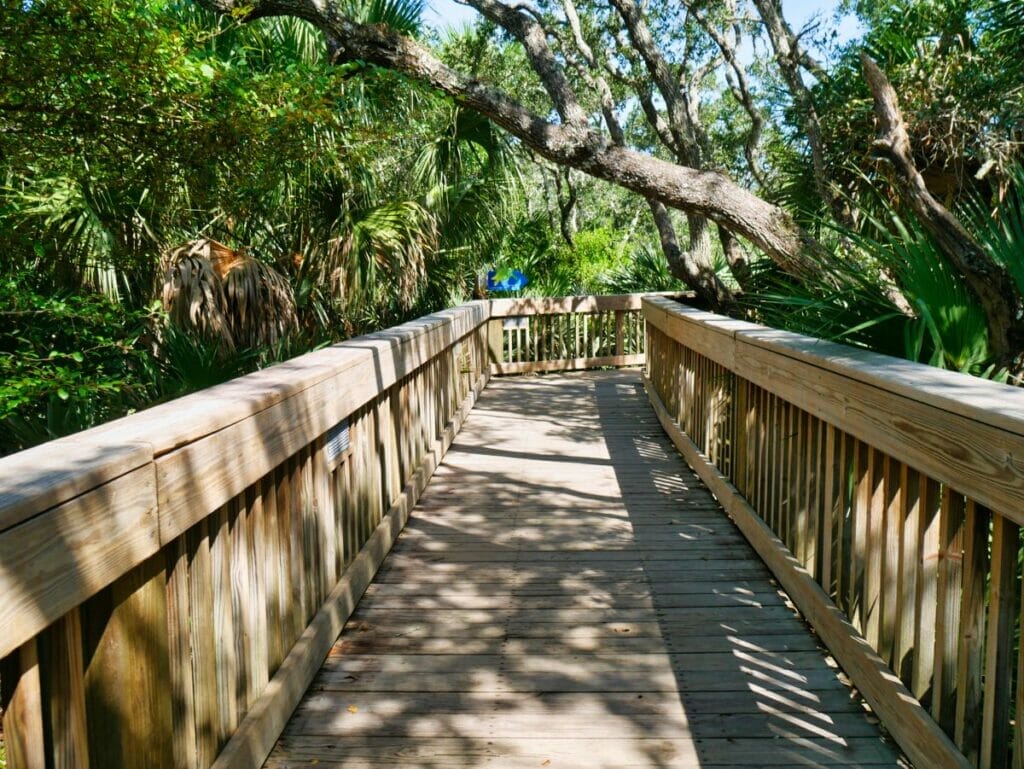

Marine Science Center Conservation
The Marine Science Center isn’t just a visitor attraction.
Its primary focus is to participate in conservation efforts around the Ponce Inlet area (and beyond) of the creatures and ecosystems that thrive in the oceans.
Of course there’s the turtle hospital and the bird conservation area that we’ve talked about above, but the Marine Science Center also contribute to research on a variety of marine topics.
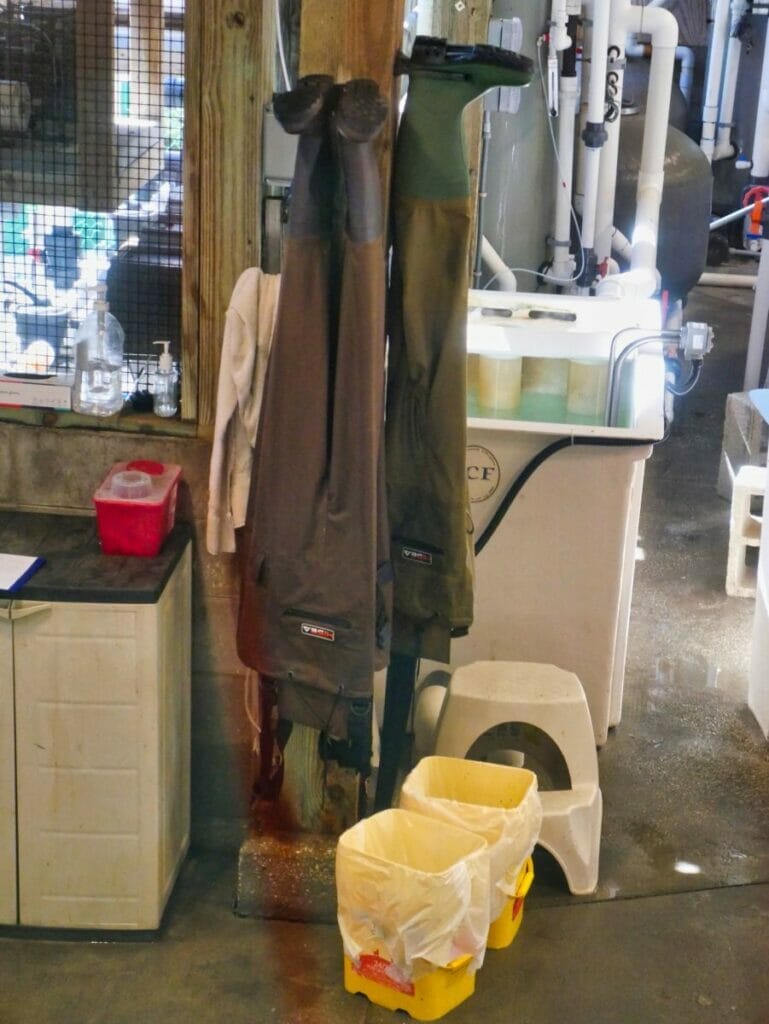
In addition, they’re a big proponent of coastal clean ups and help keep the waters and beaches clear, alongside volunteers.
It’s important to understand the background and other purposes of an animal-focused center to truly make sure that you’re supporting a place that is about the animals, first and foremost, and visitor entertainment second (and the Marine Science Center definitely passes the test for their valuable mission and efforts!)
Overall Experience and Review
Is the Marine Science Center worth a visit?
Should you add it to your must-do list on Ponce Inlet?
Our answer is a resounding yes!

Learning about the turtle rehabilitation program and being able to speak to and learn from the dedicated marine scientists and researchers and employees of the center makes this 100% worth the already affordable price.
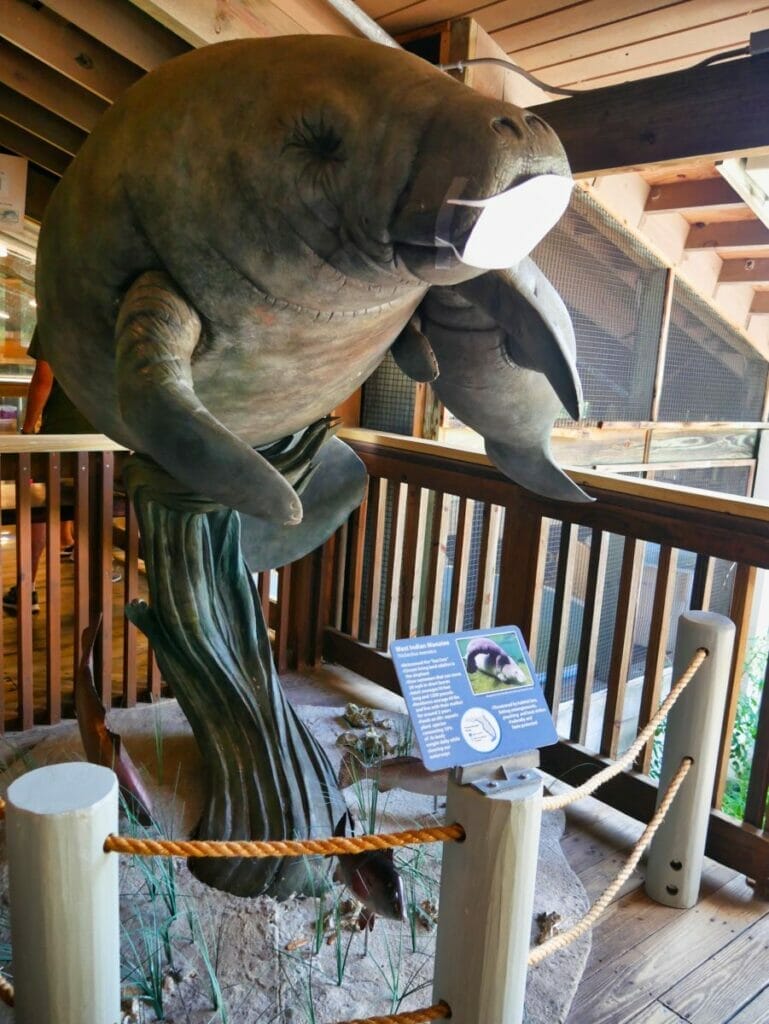
The other exhibits, like the fish tanks and marine science info boards are icing on the cake, and the nature walk is a nice look at Florida nature with some cool views.
What to See Nearby
If you’re planning a trip to the Marine Science Center, there are a couple of surrounding experiences to check out!
- Ponce Inlet beach – the beach in Ponce Inlet is known for its amazing surf conditions, and it feels much more natural and real-Florida than some of the surrounding beaches with high rises everywhere.
- Museum of Arts and Sciences – about a 25 minute drive away, north to Daytona, is the Museum of Arts and Sciences which is a fantastic museum with Coca-coca memorabilia, historic American furniture, Chinese art, a planetarium, and more!
- Cici and Hyatt Brown Museum – in the same complex as the Museum of Arts and Sciences, this art museum has the largest collection of art depicting Florida in the world!
Pin for Later!
Get the All-American Travel Secrets!
Don't miss out on America's hidden gems!
